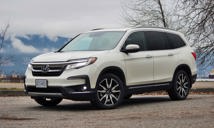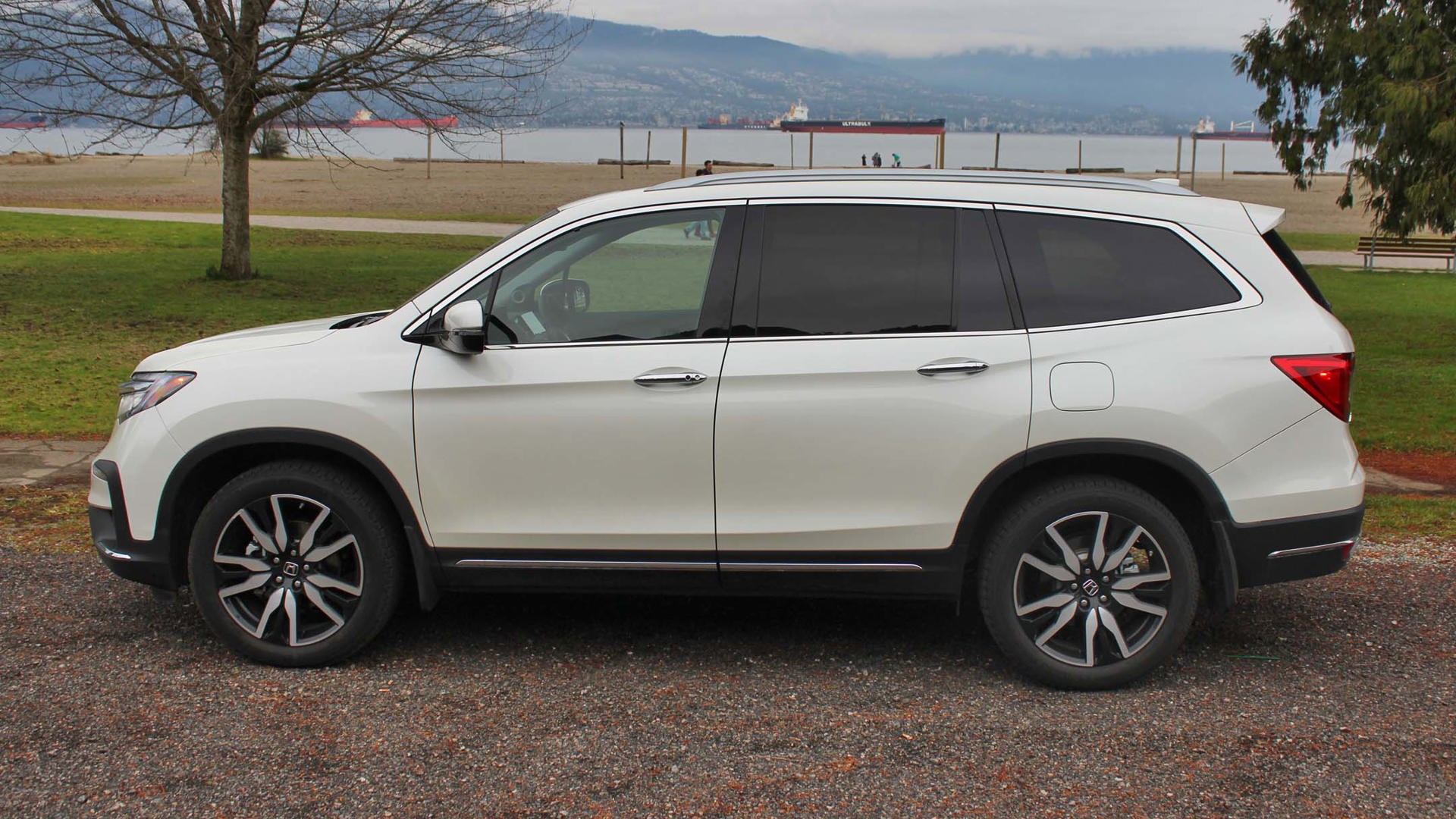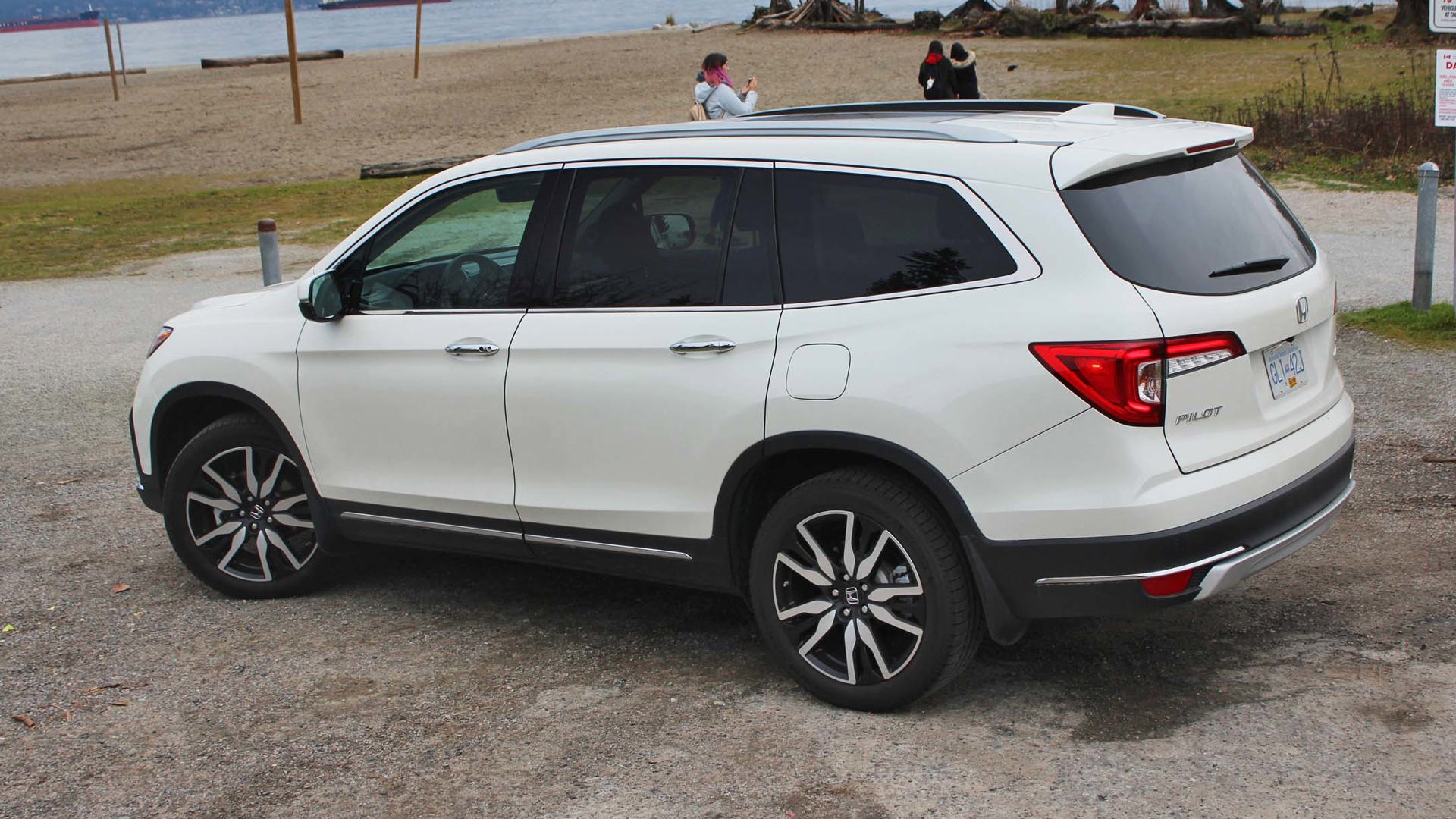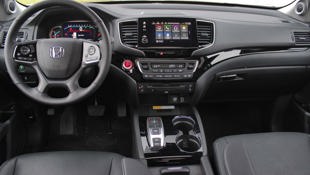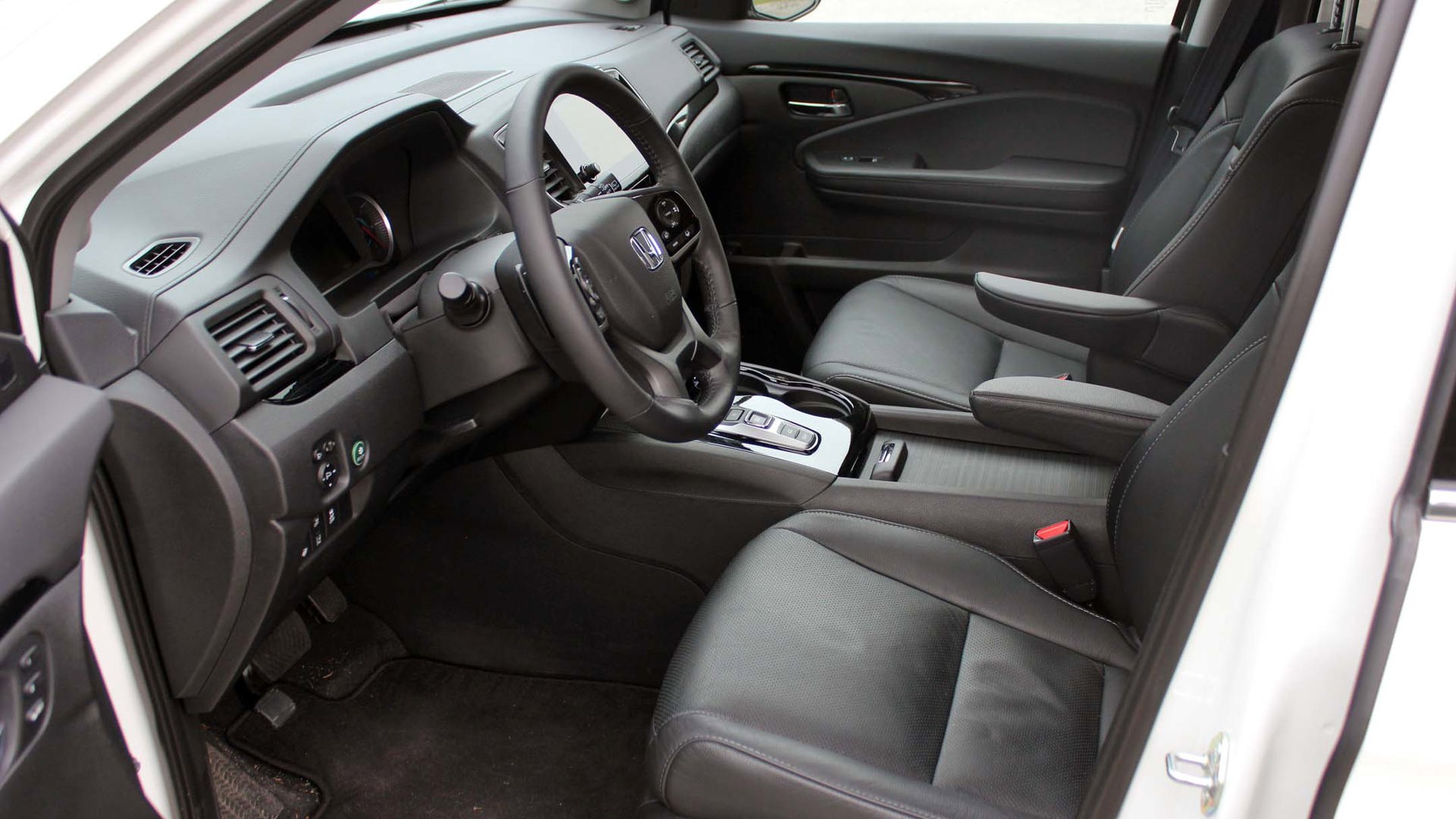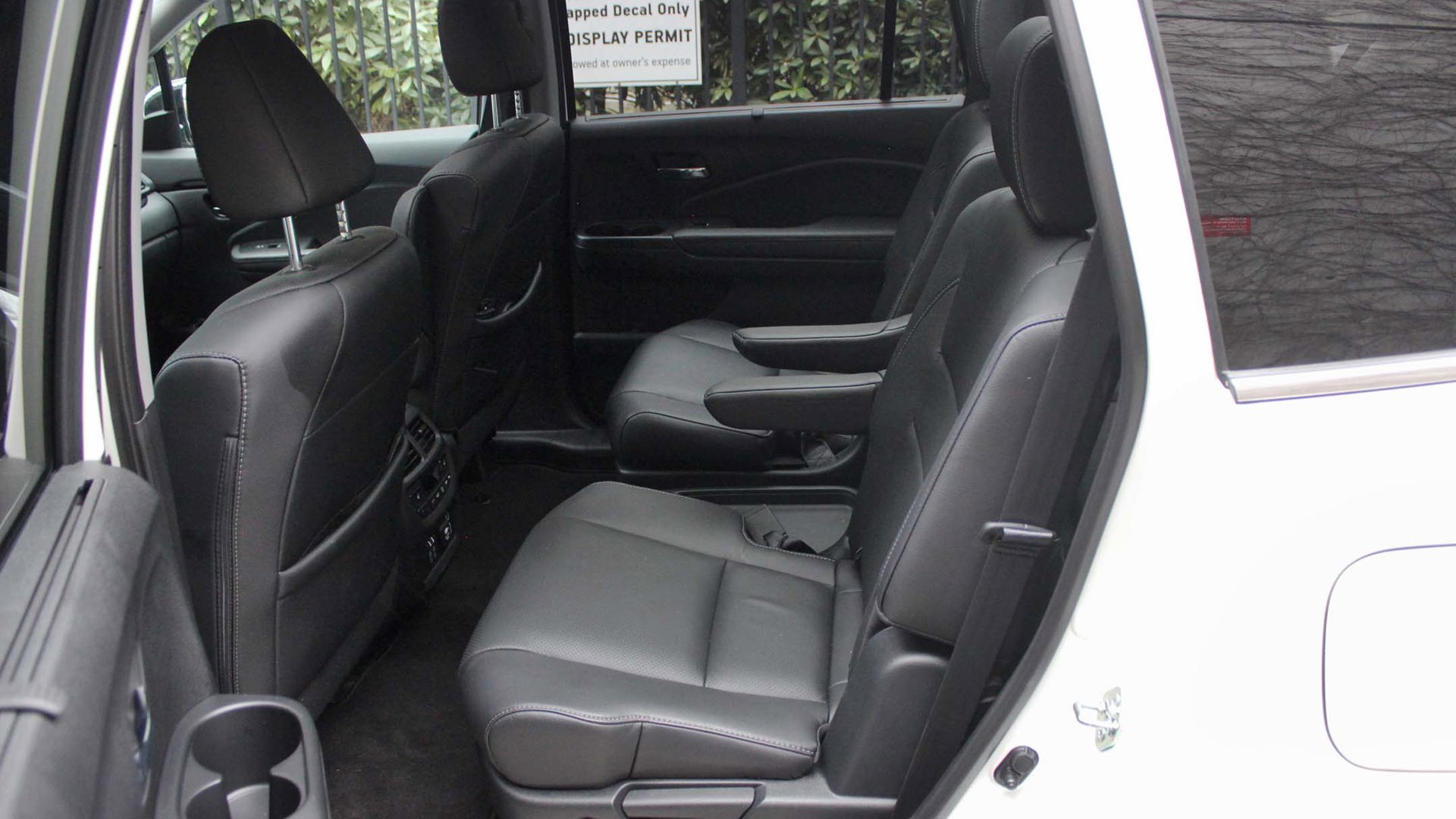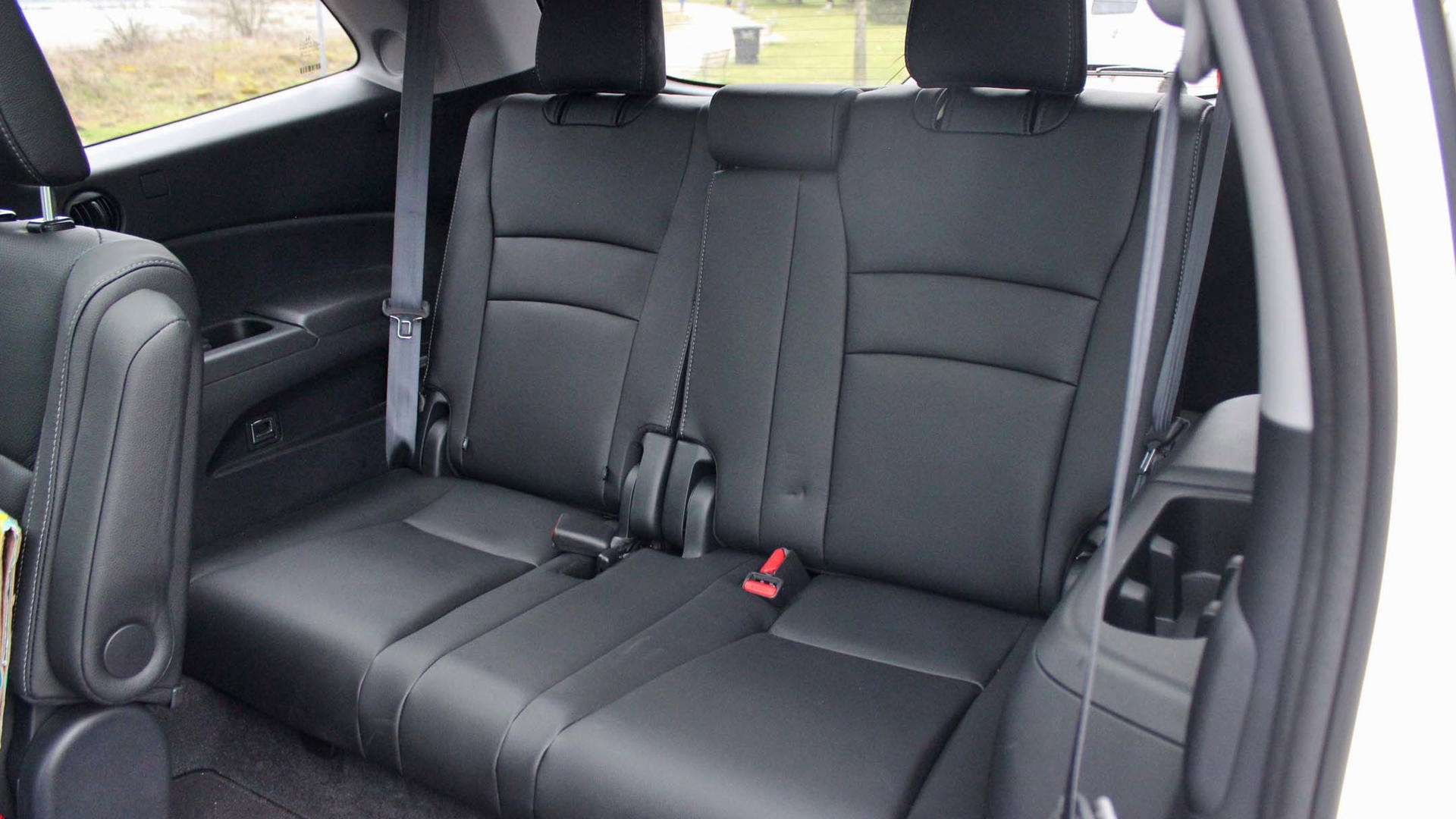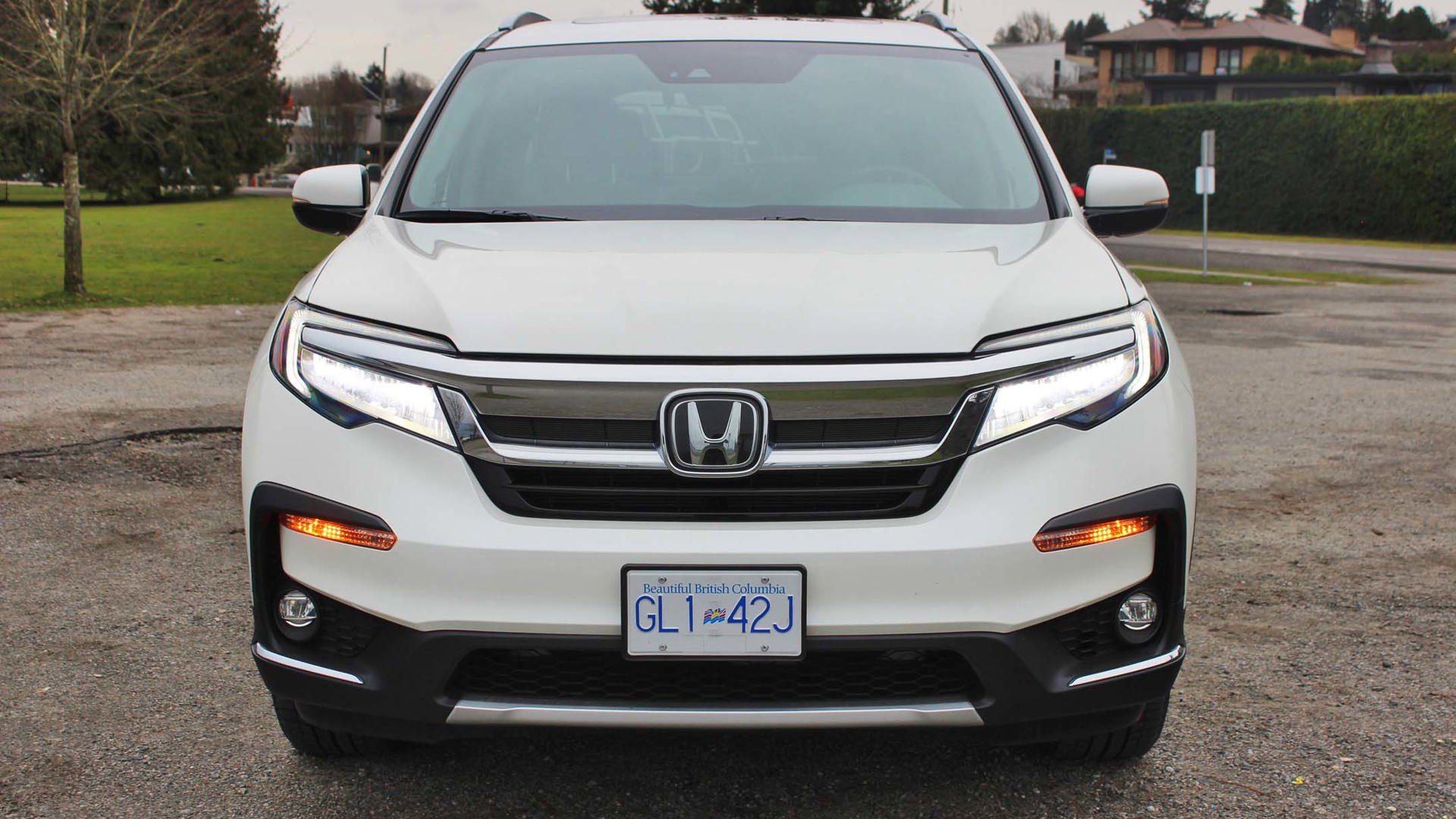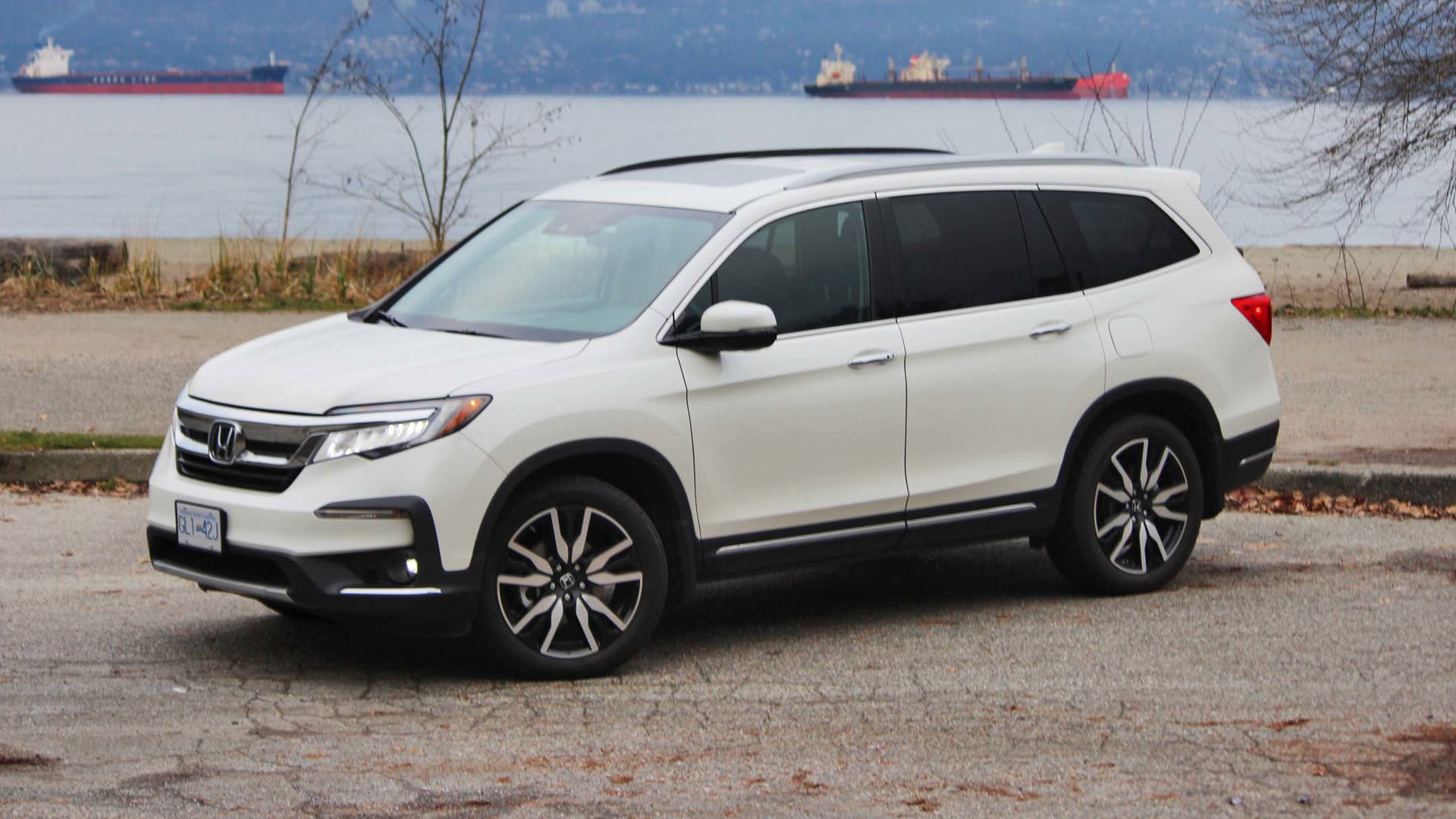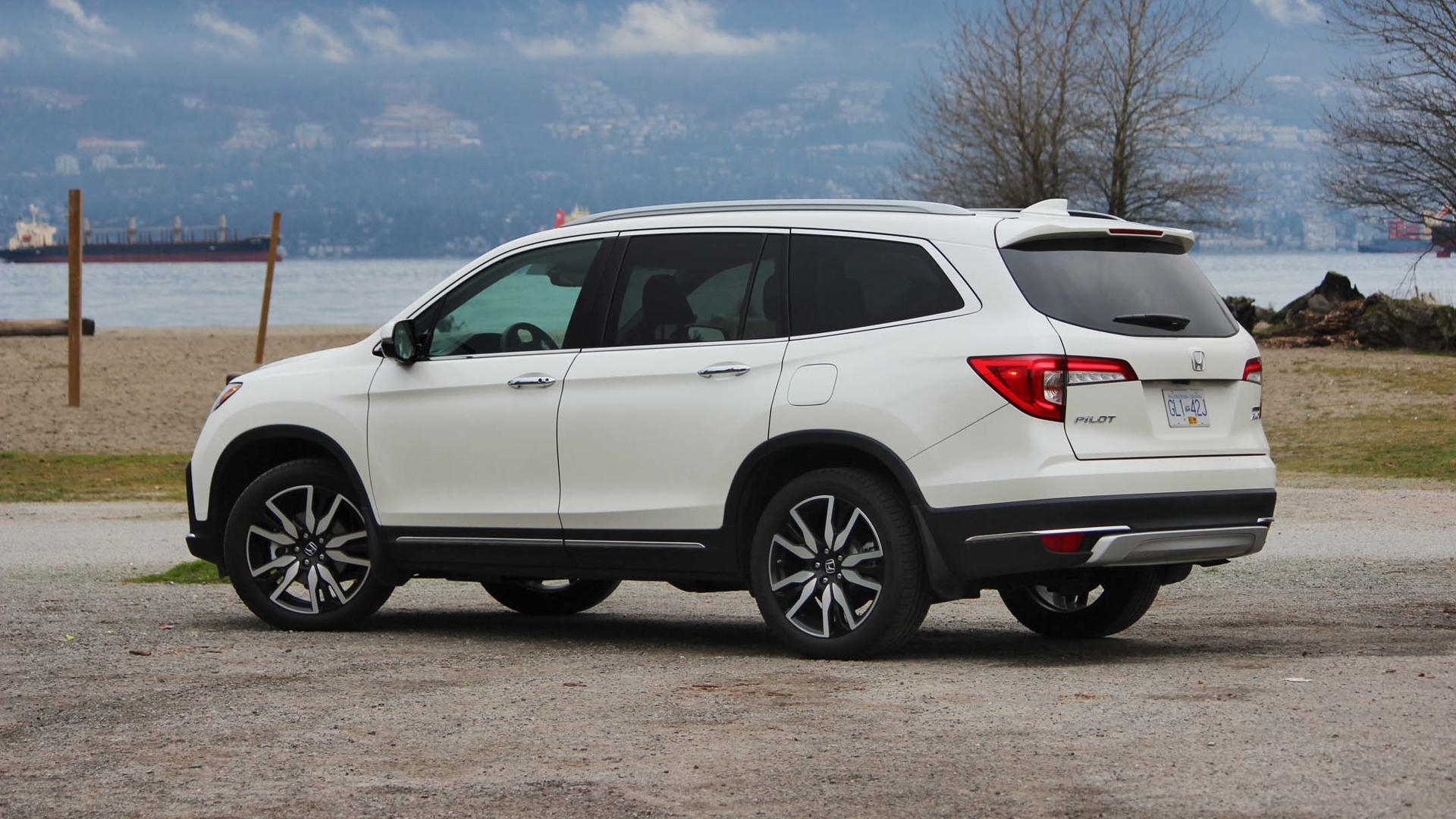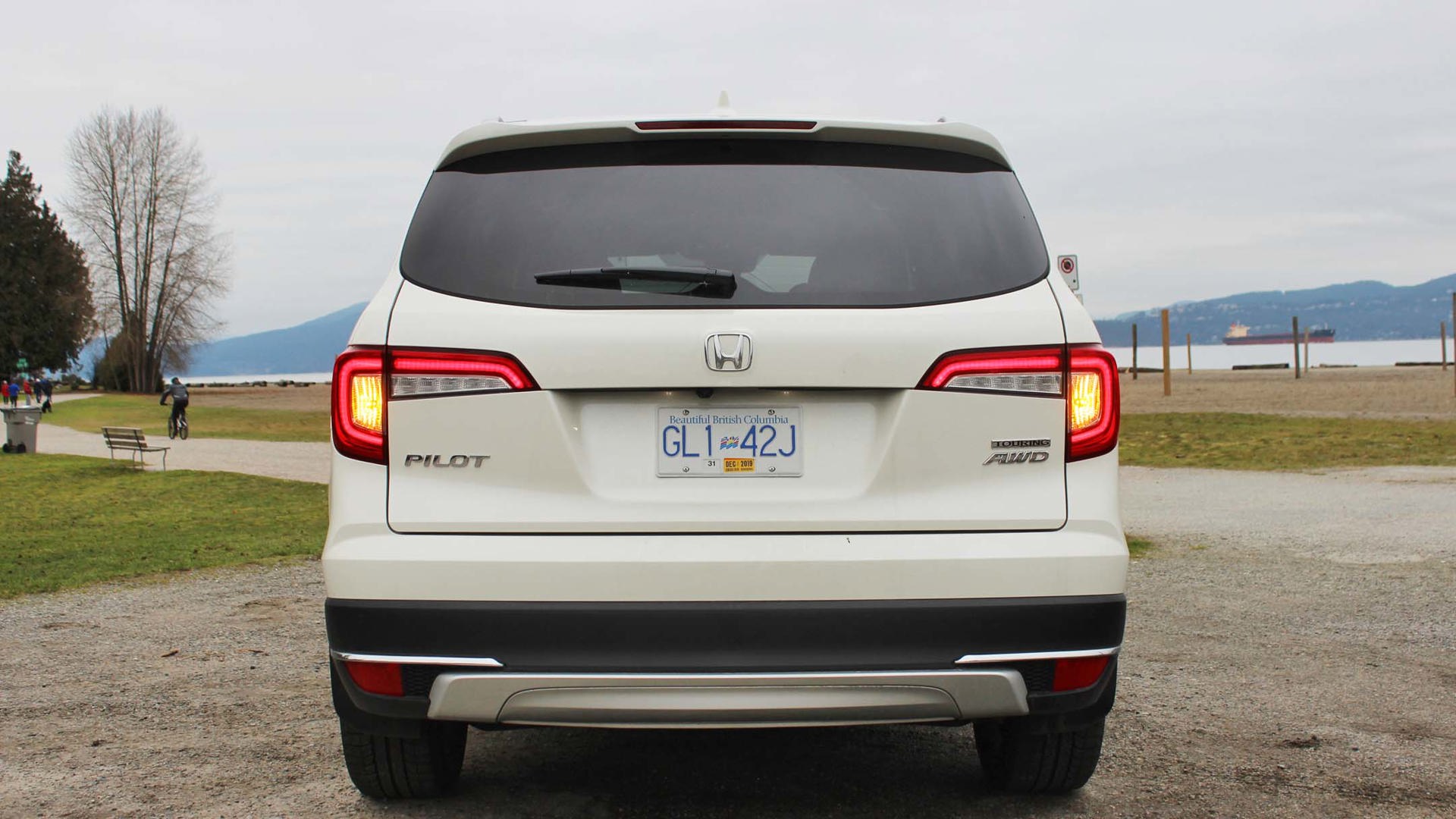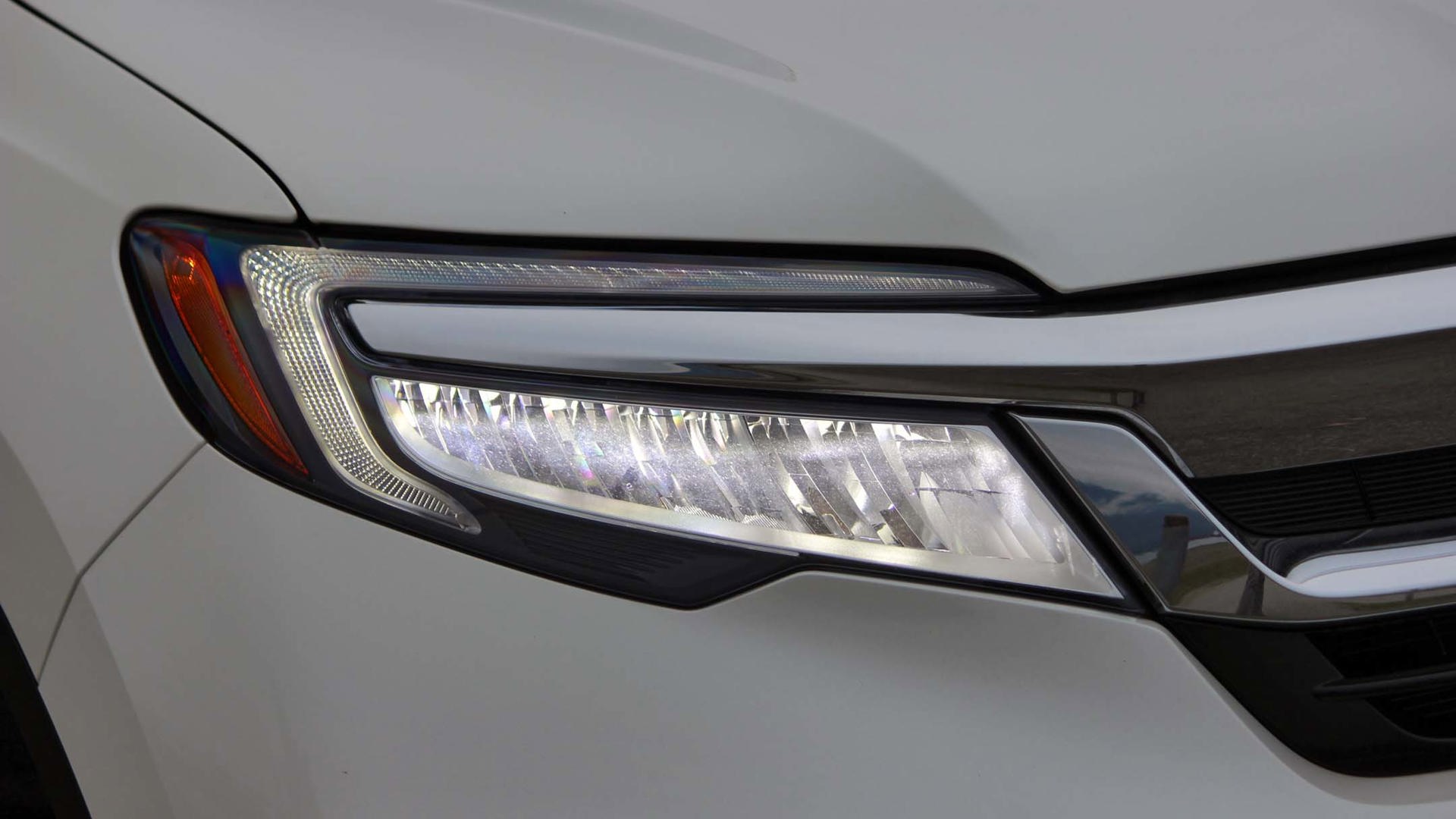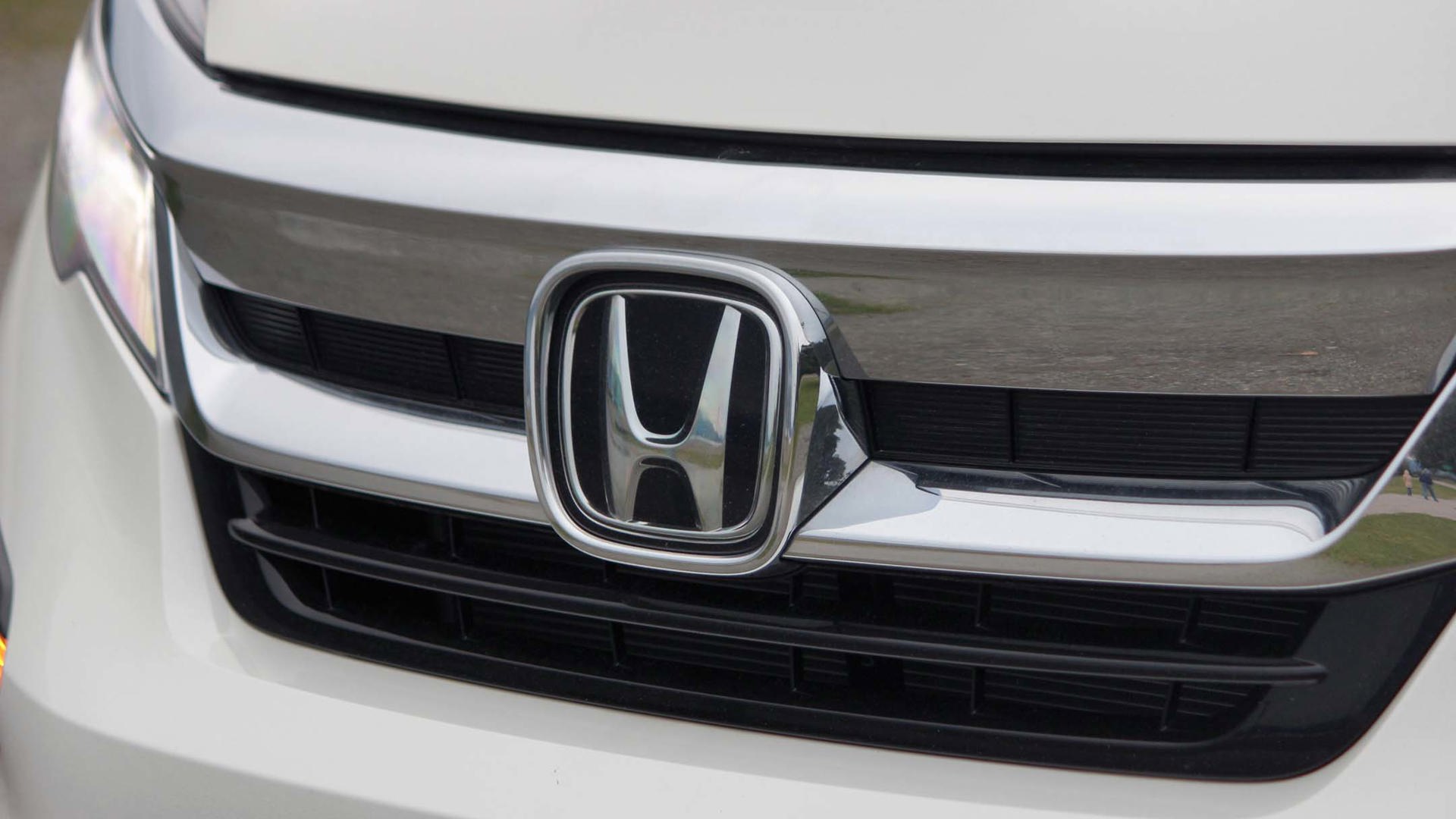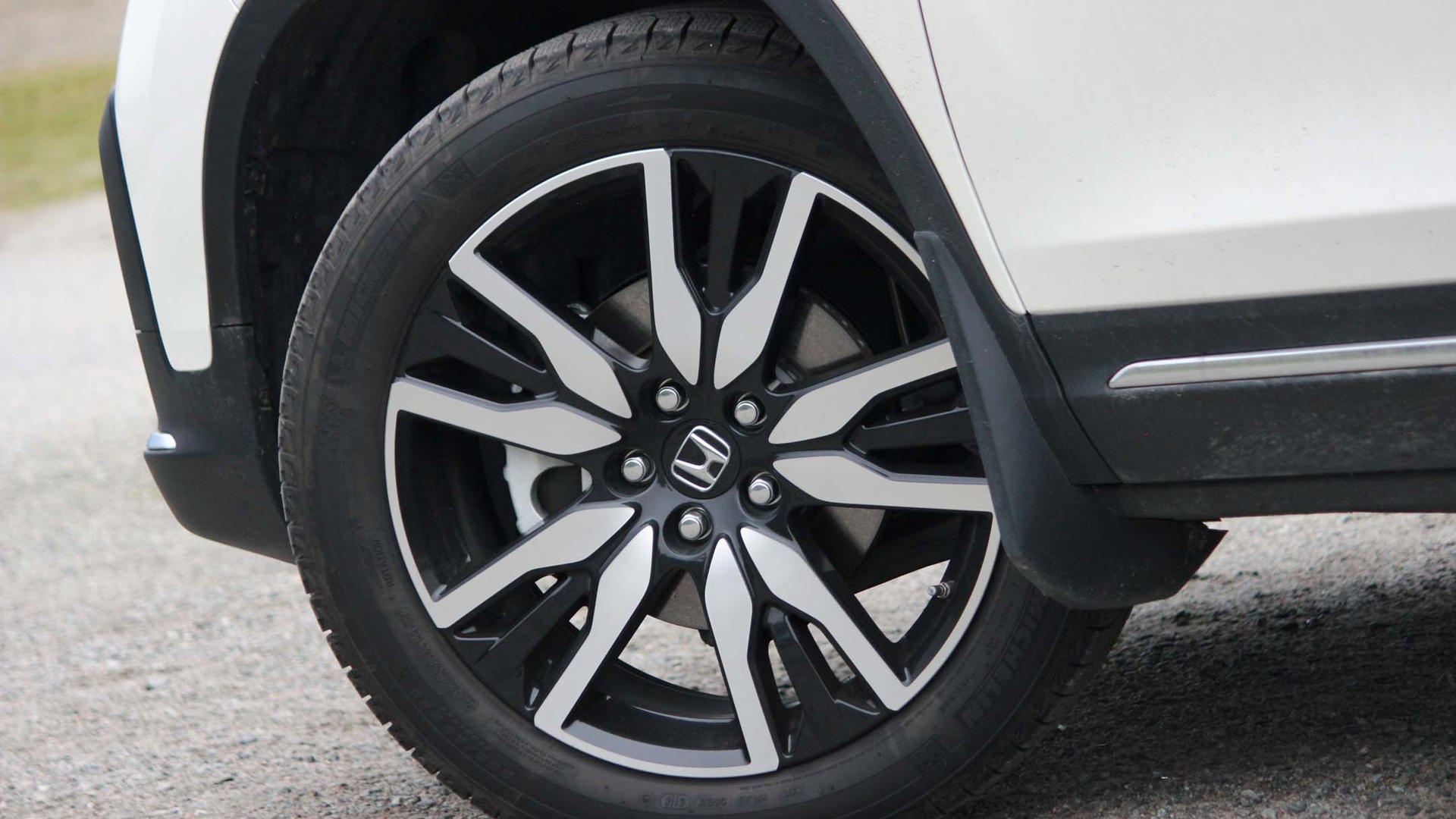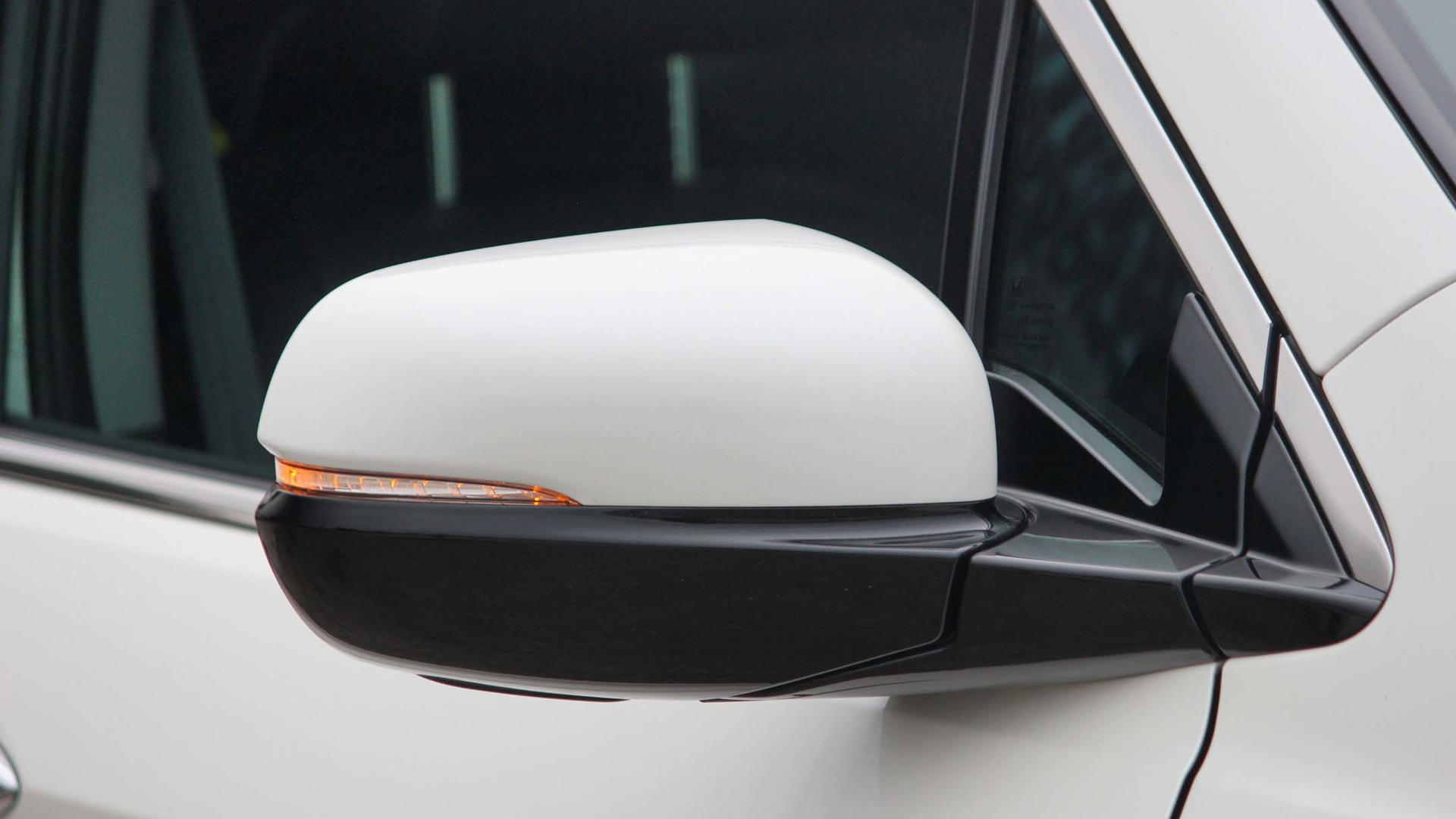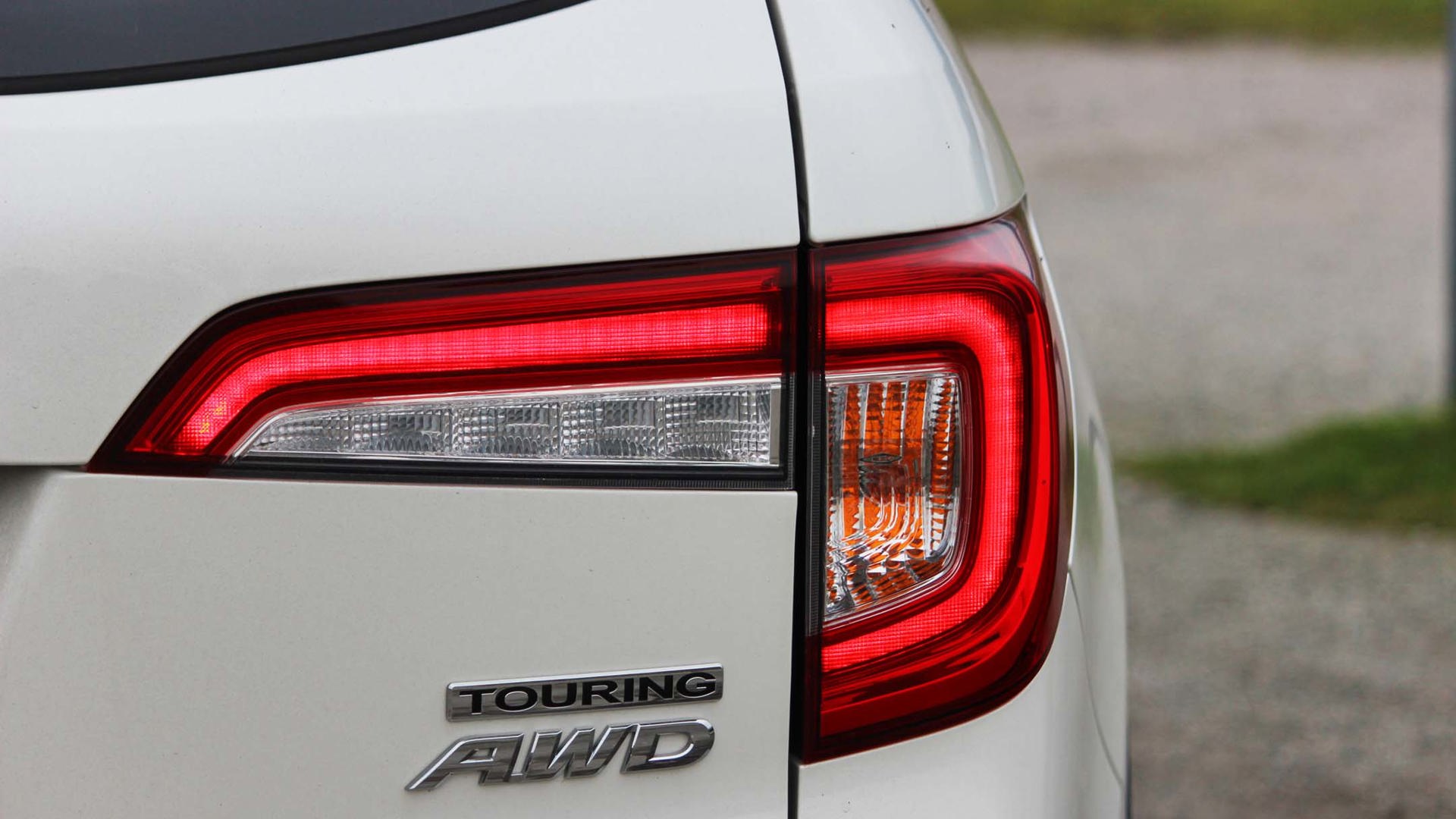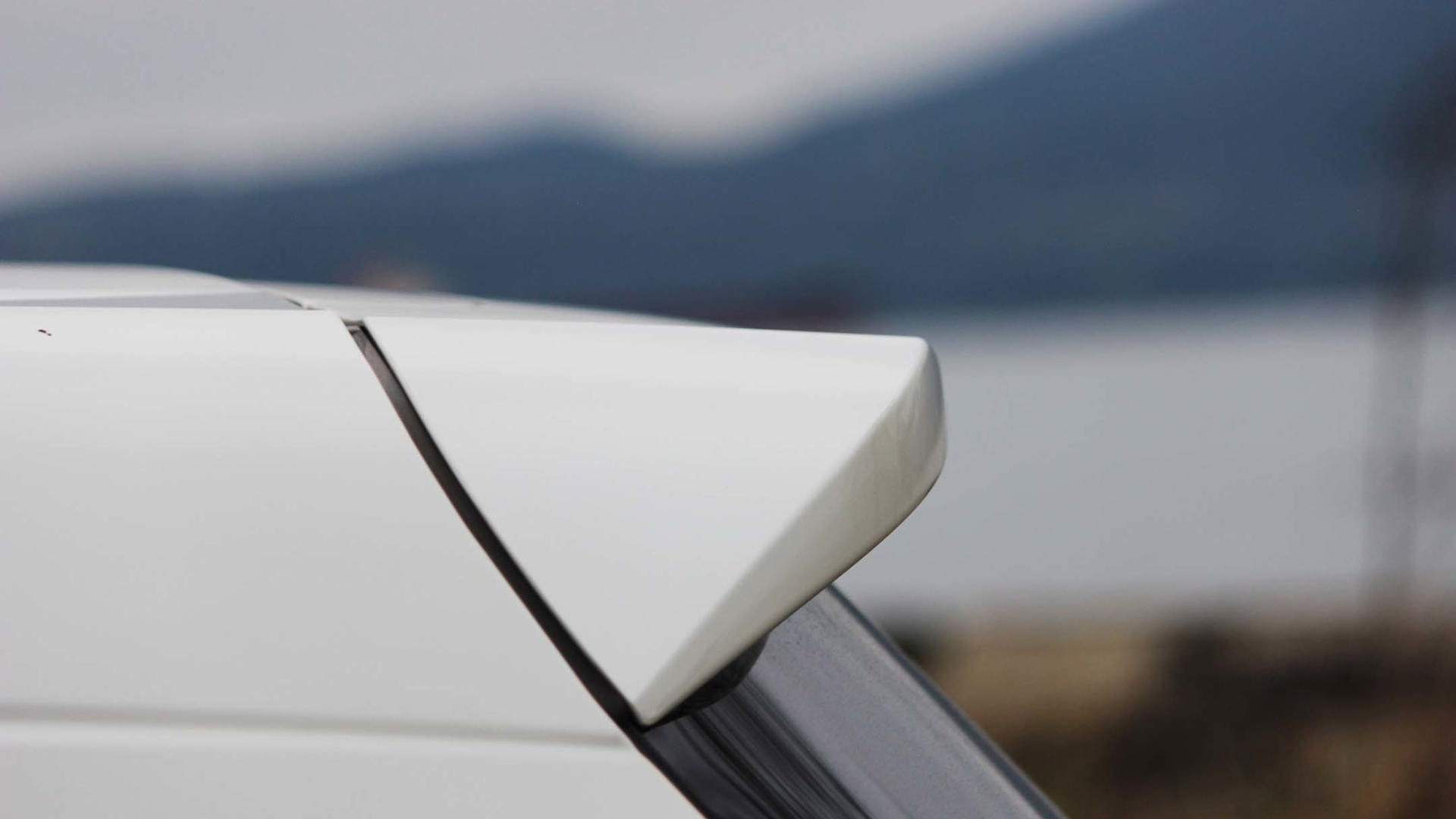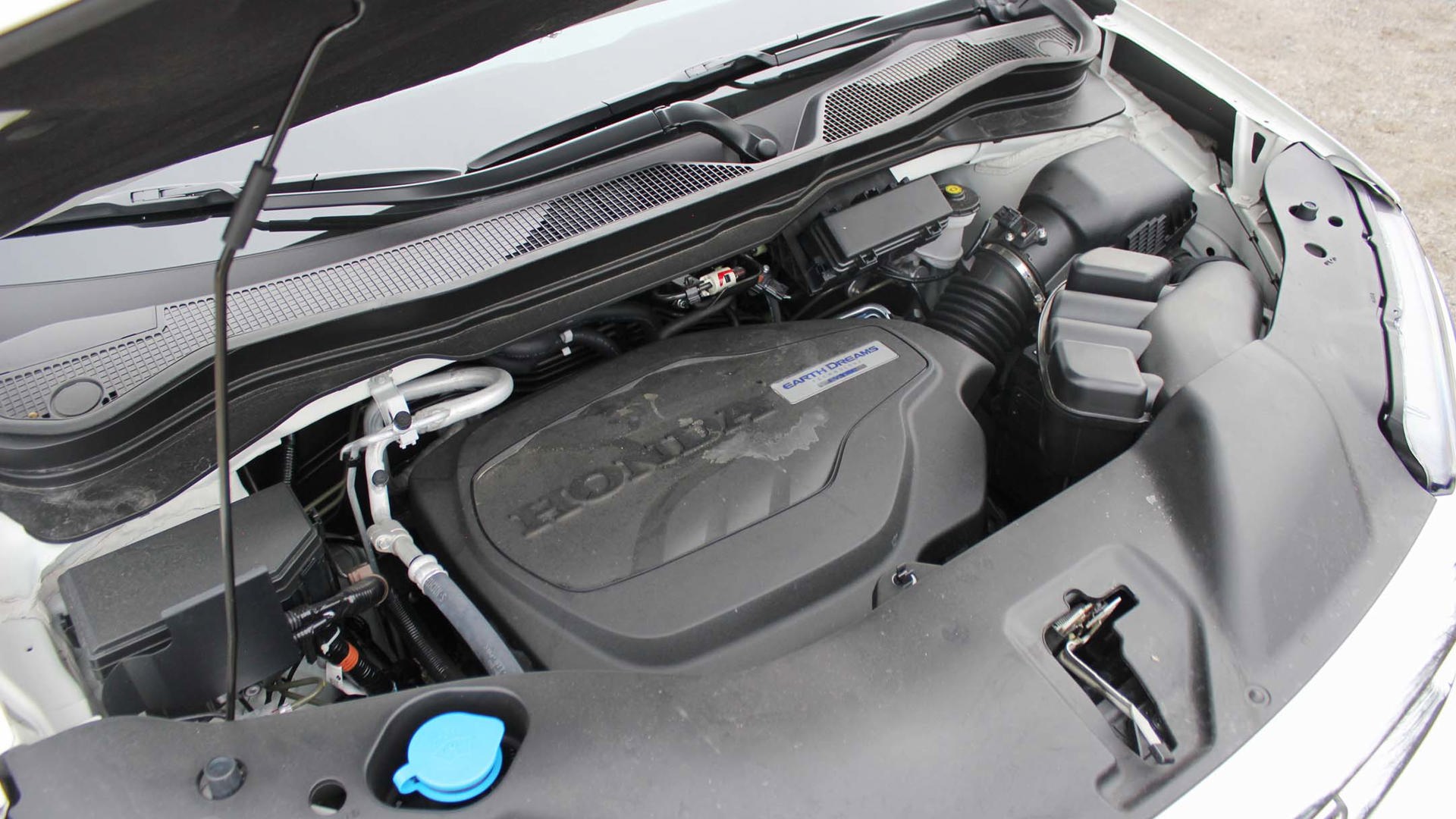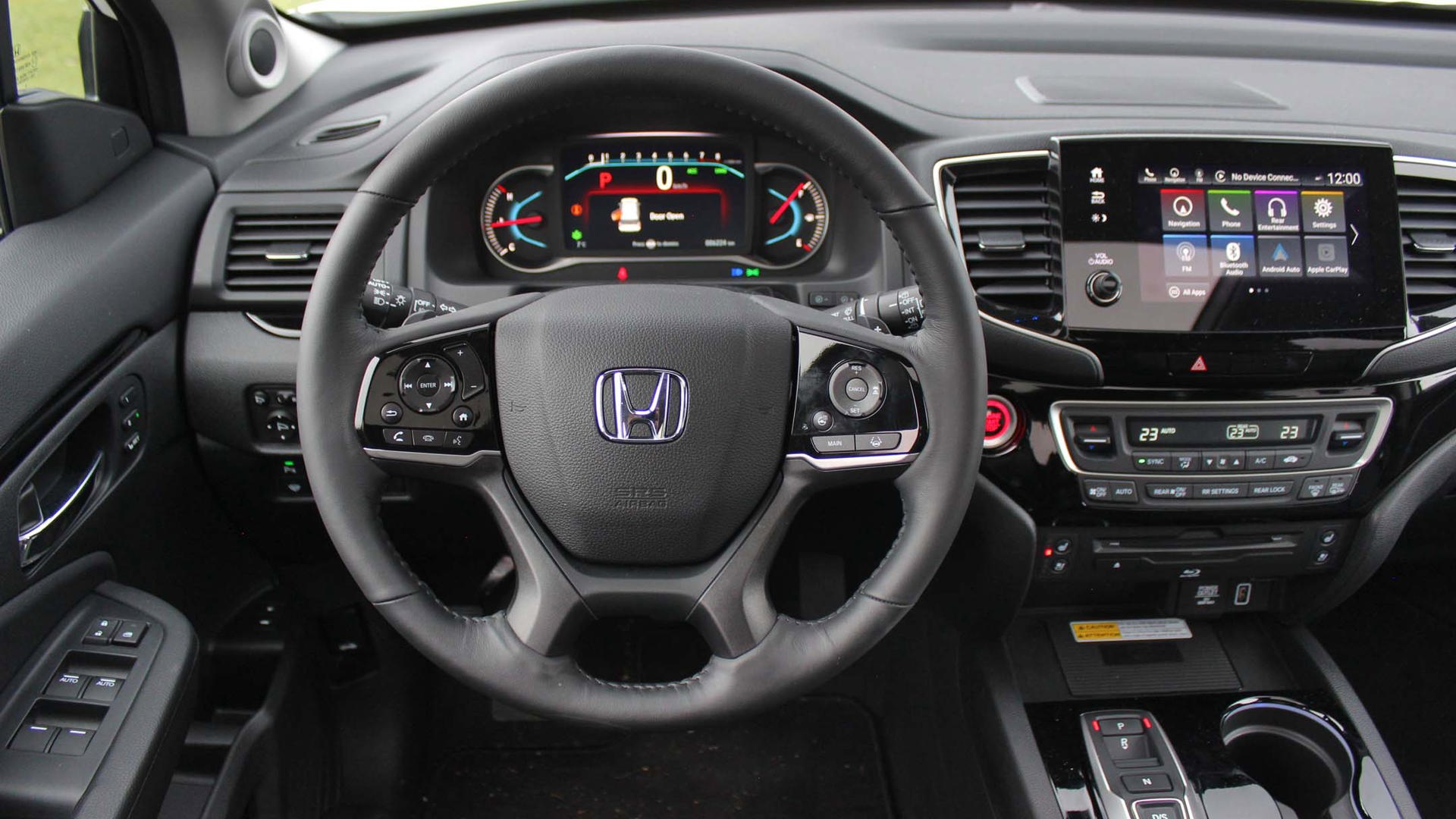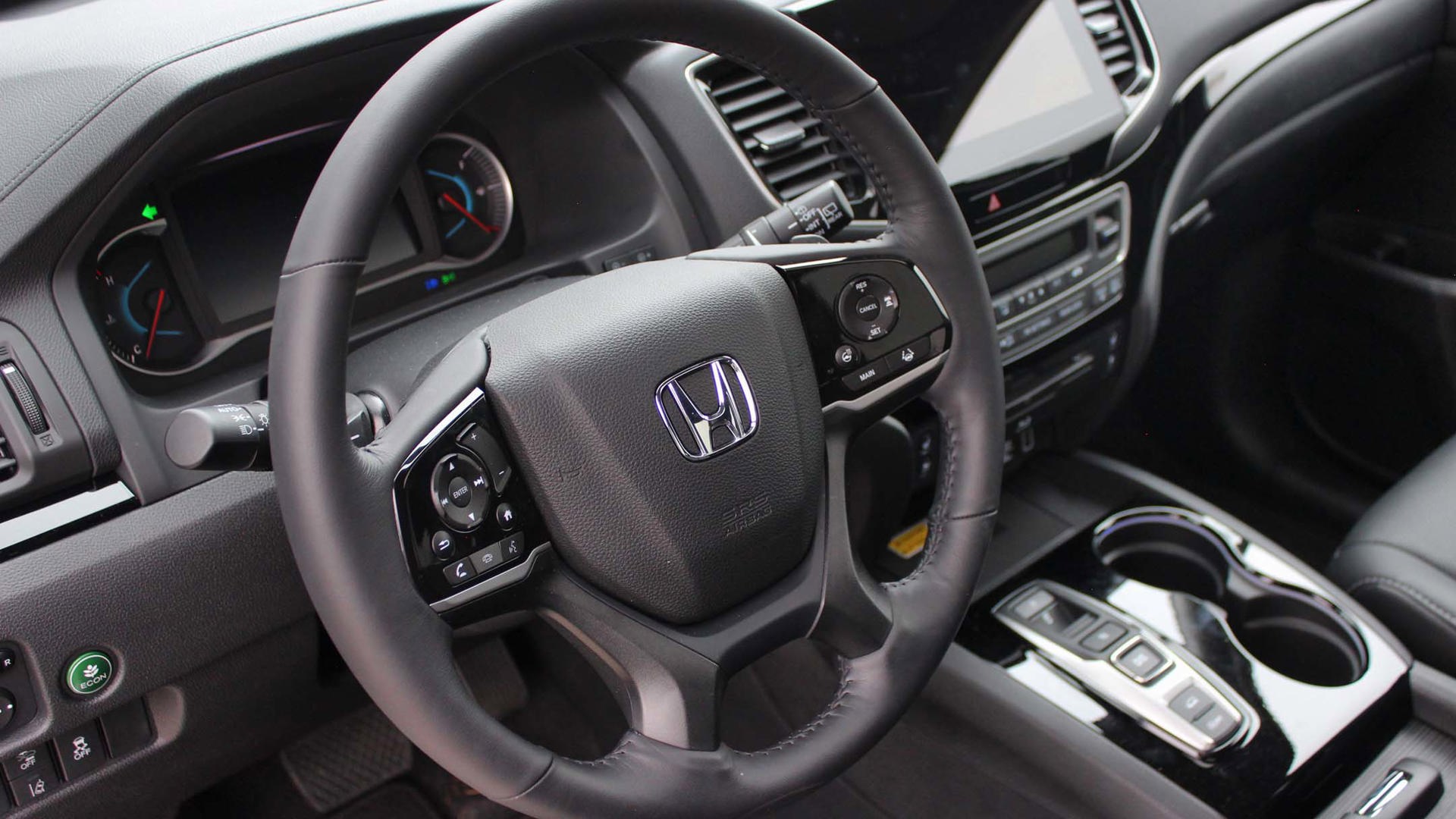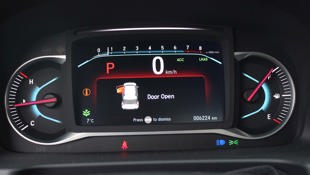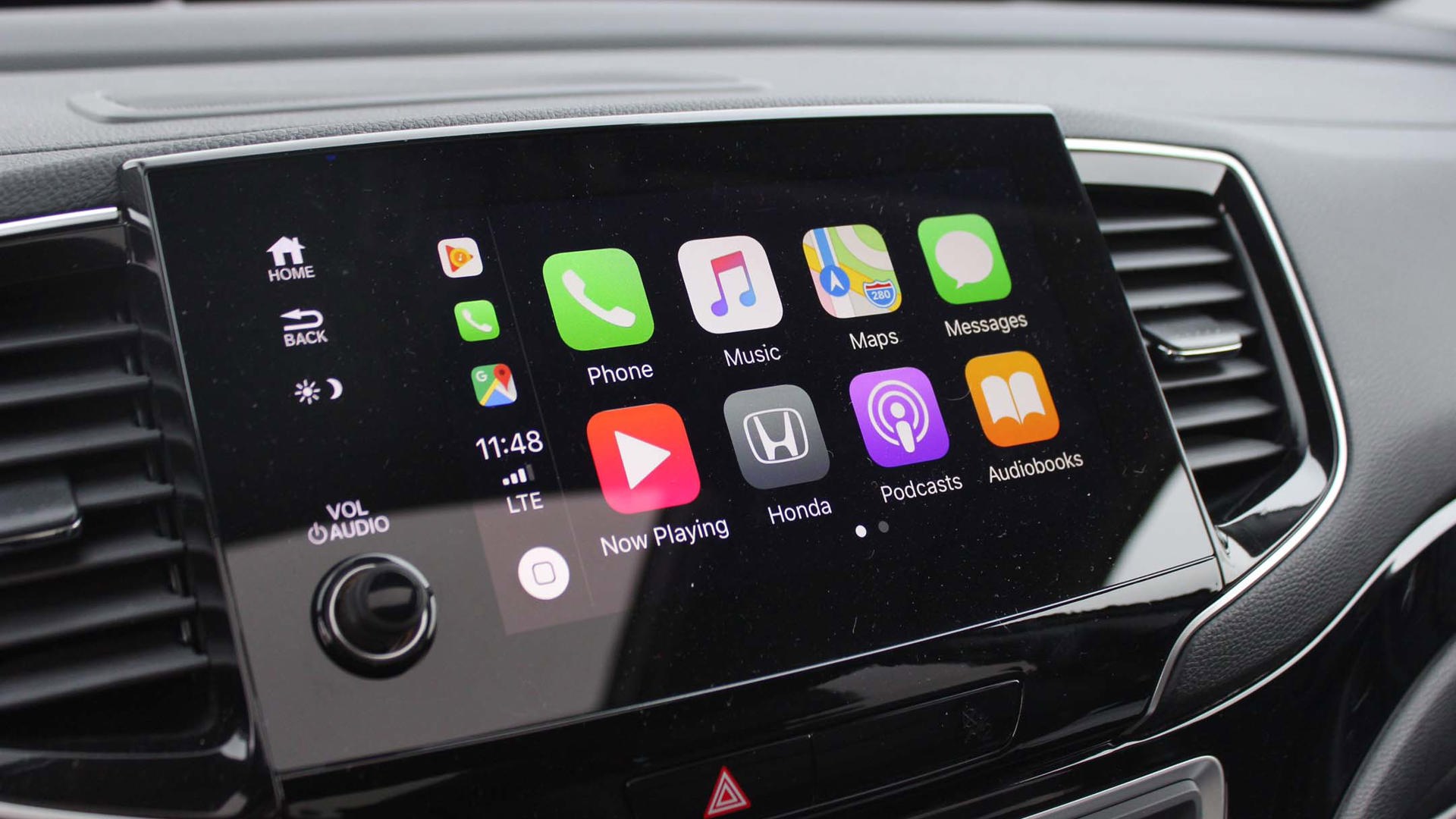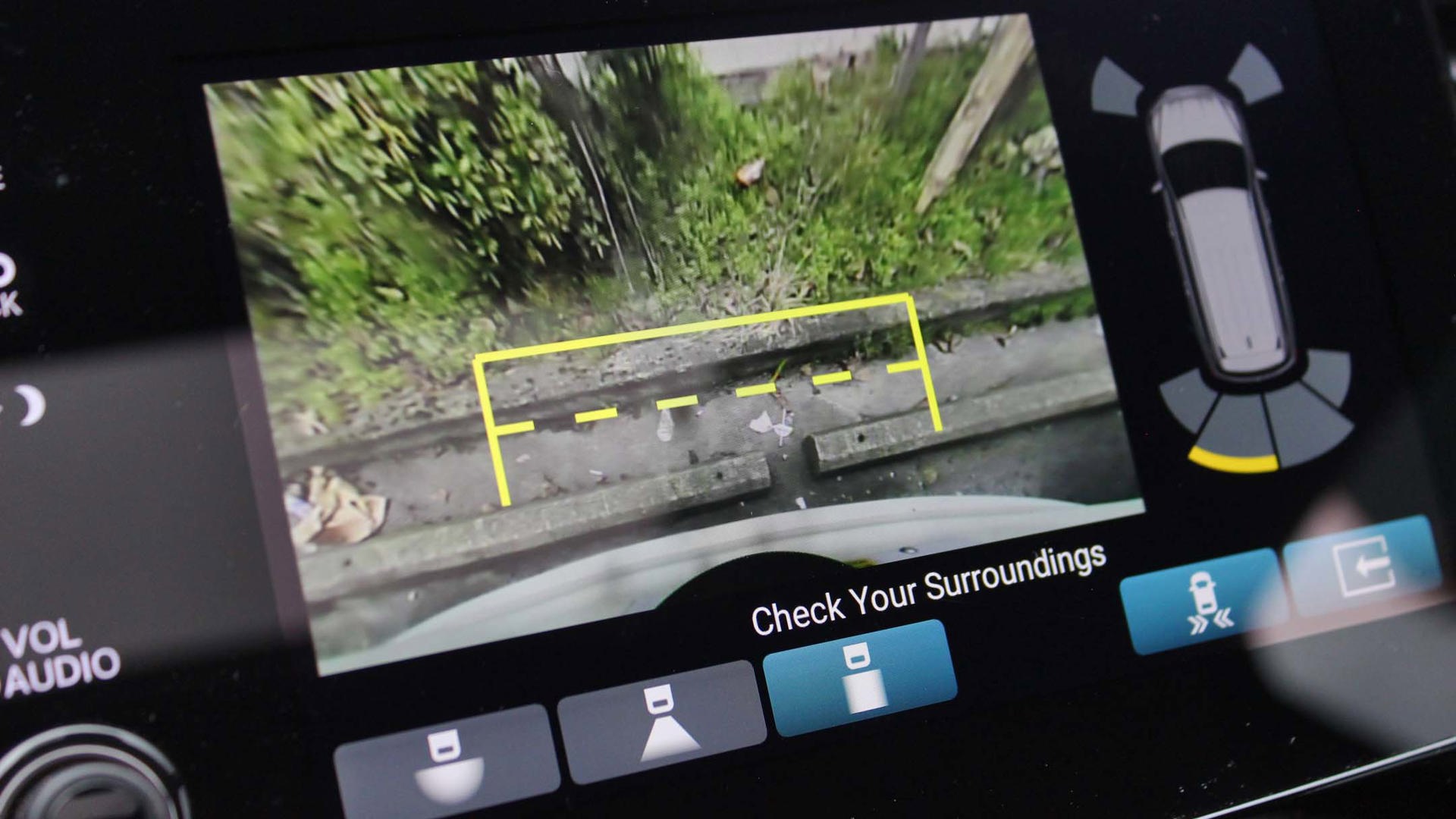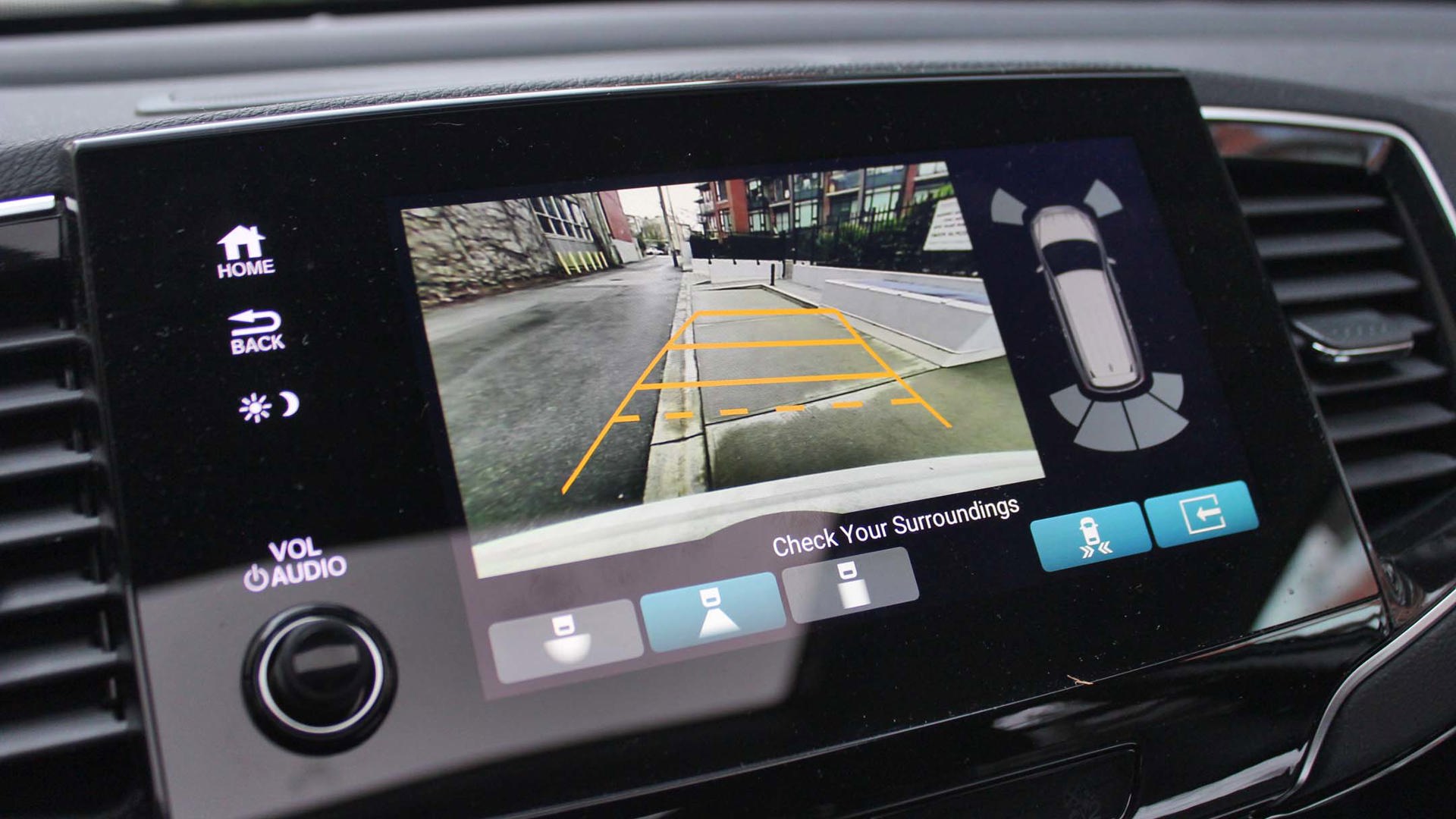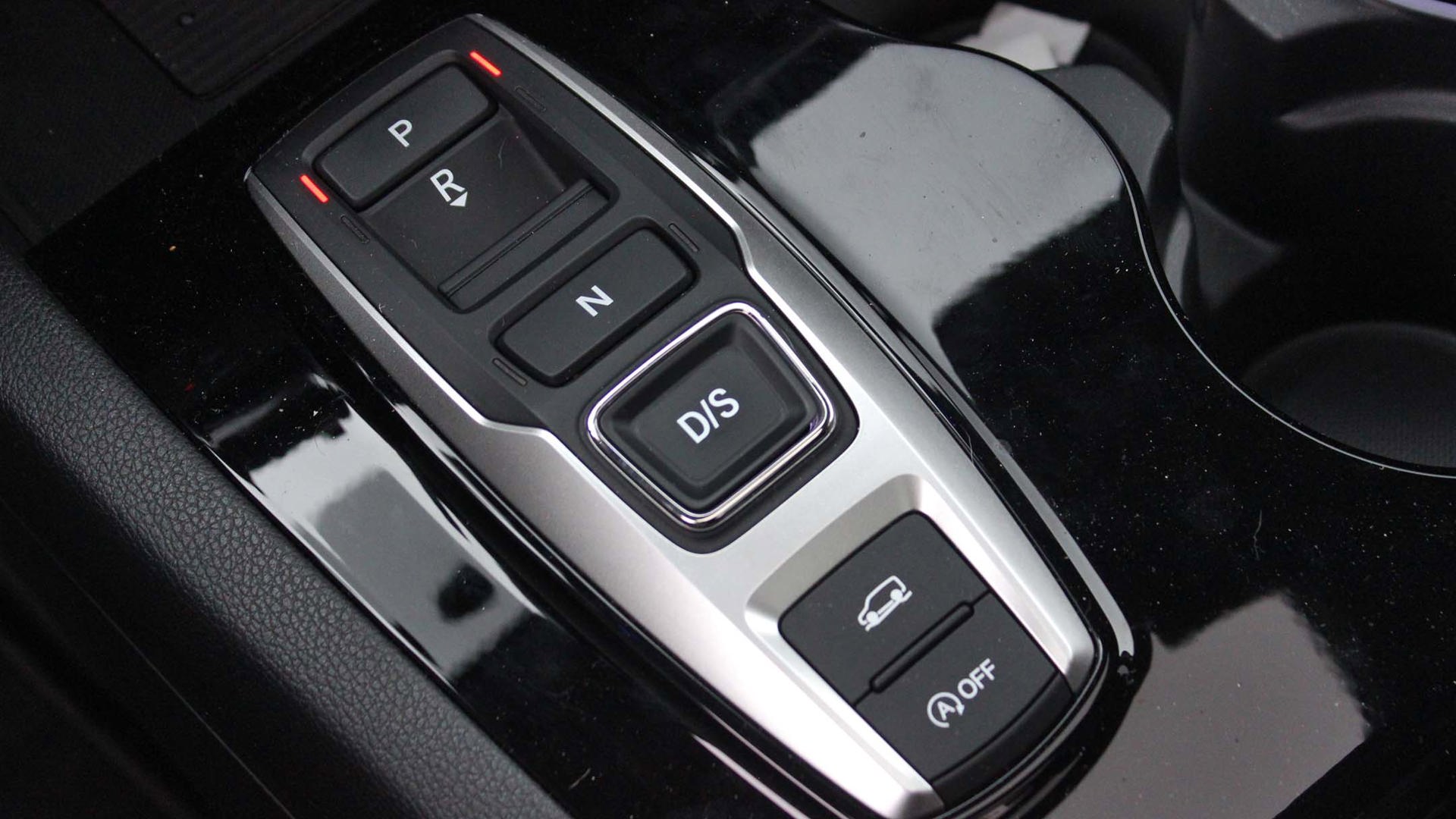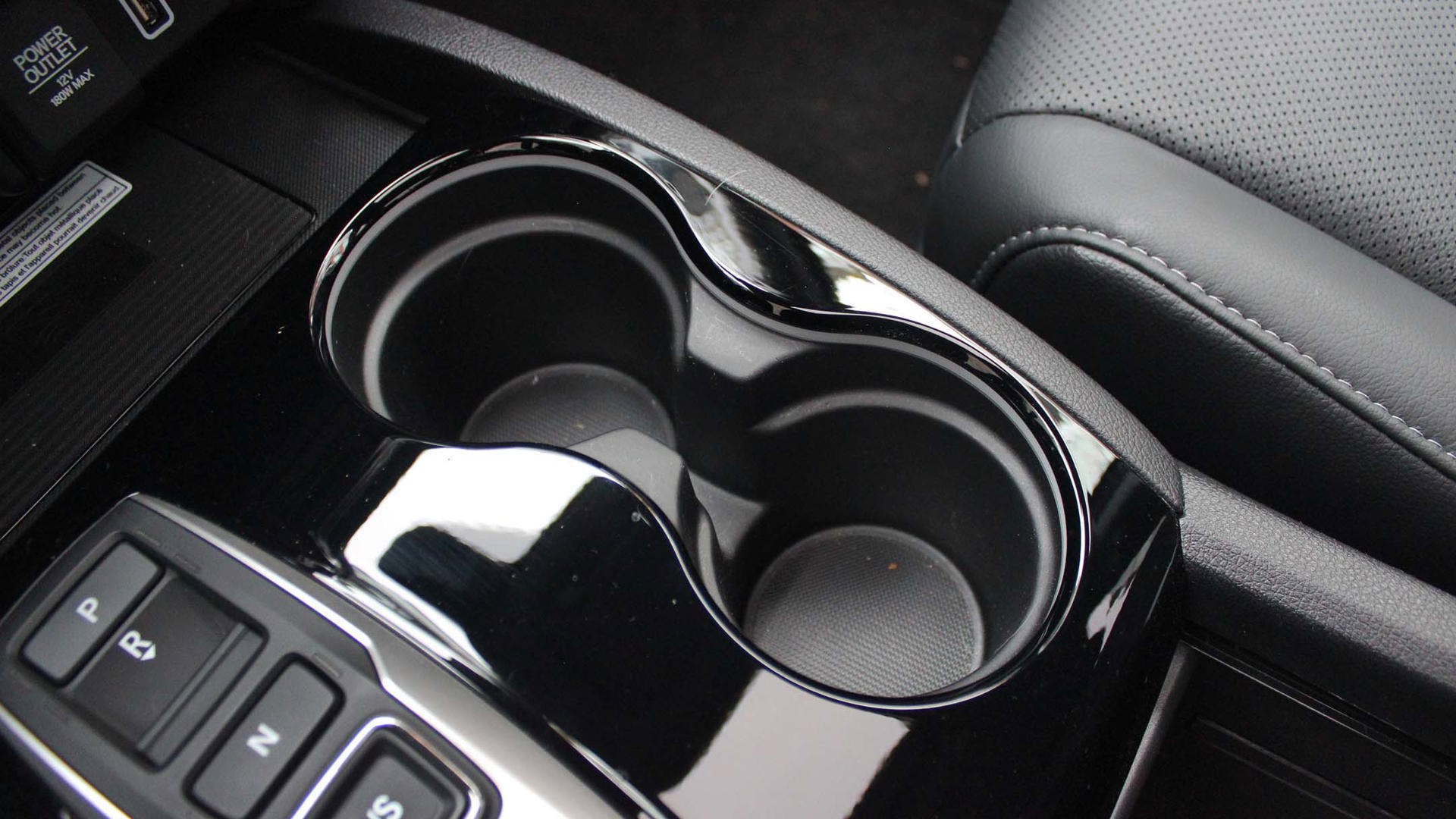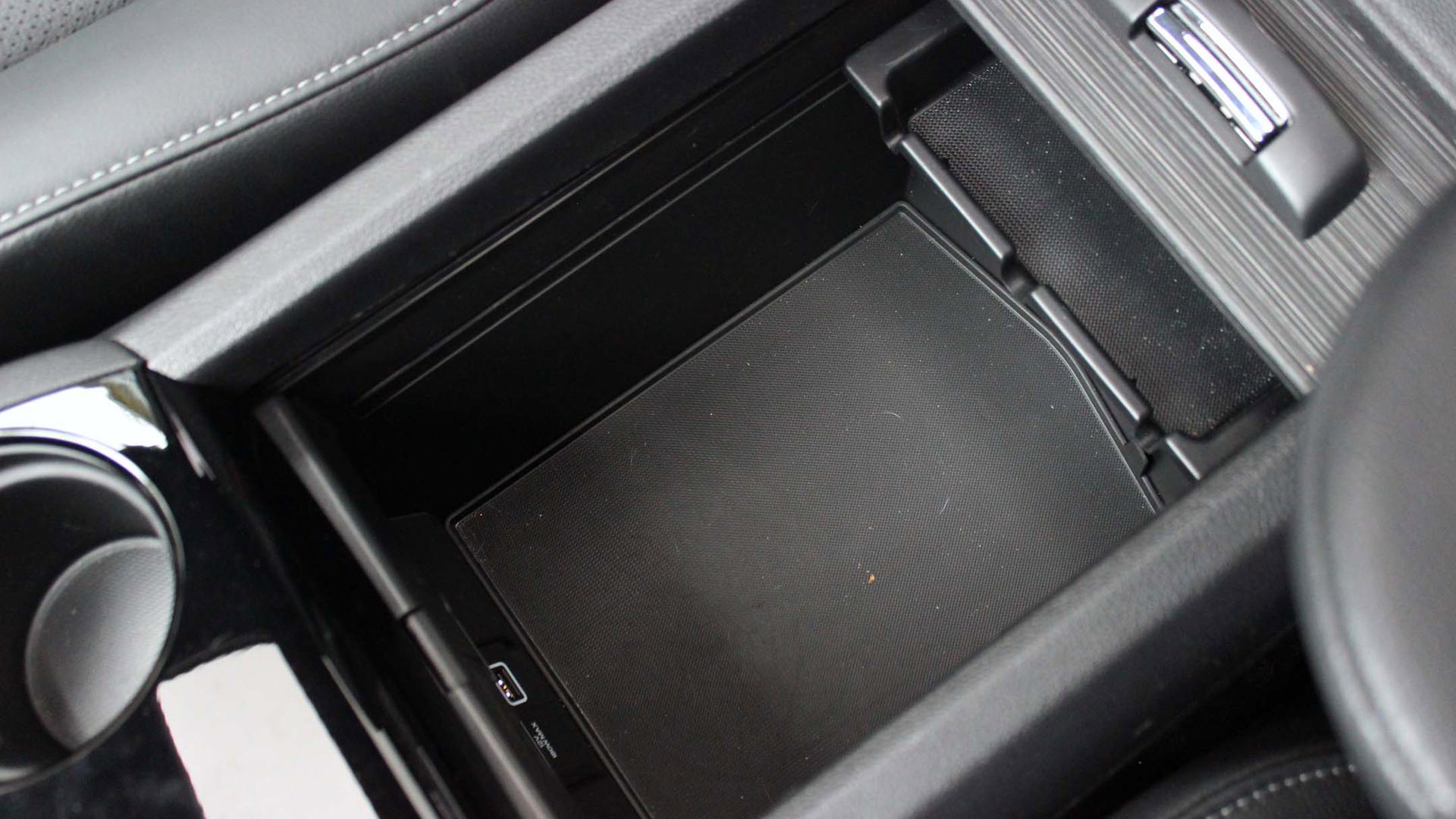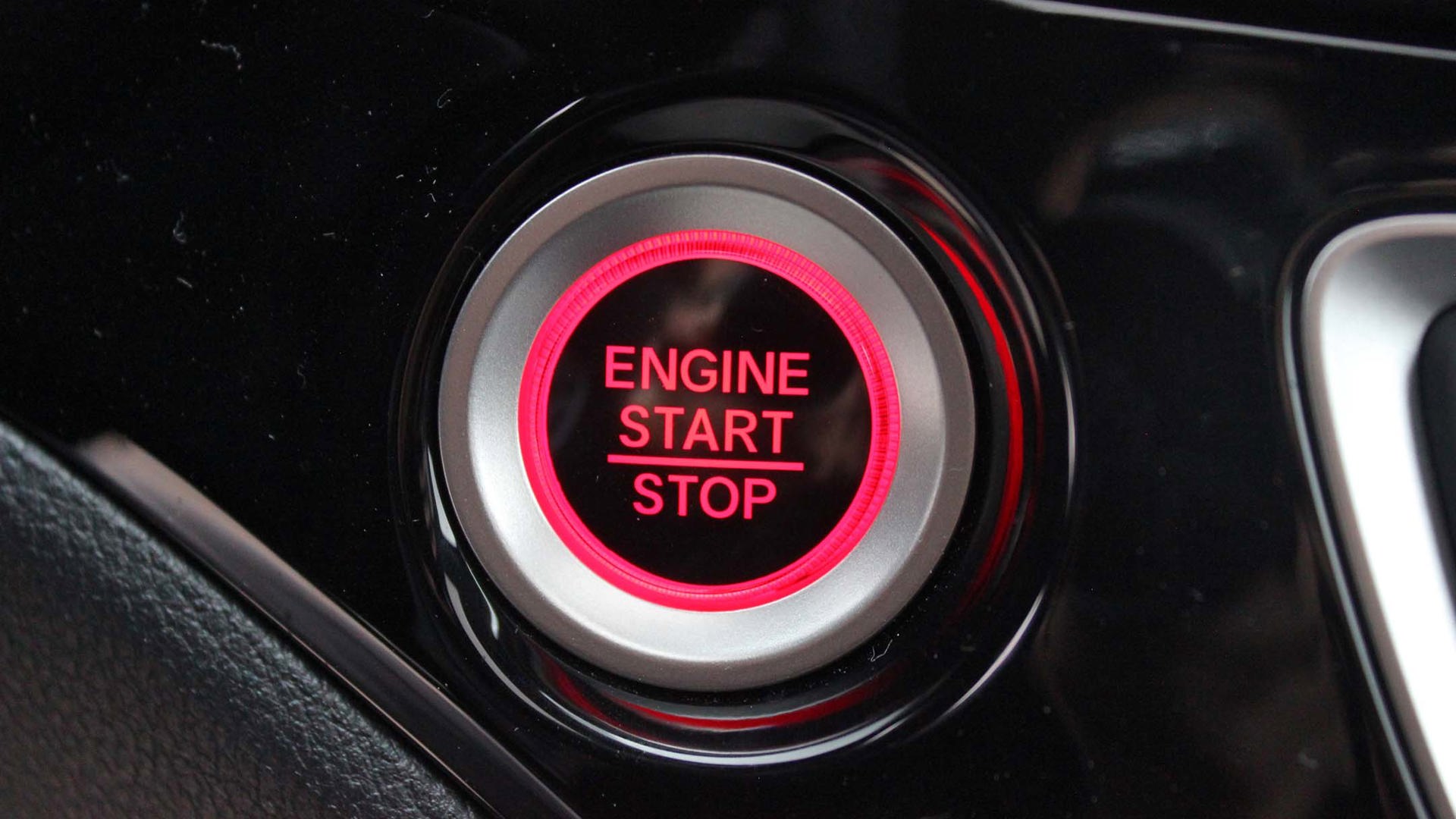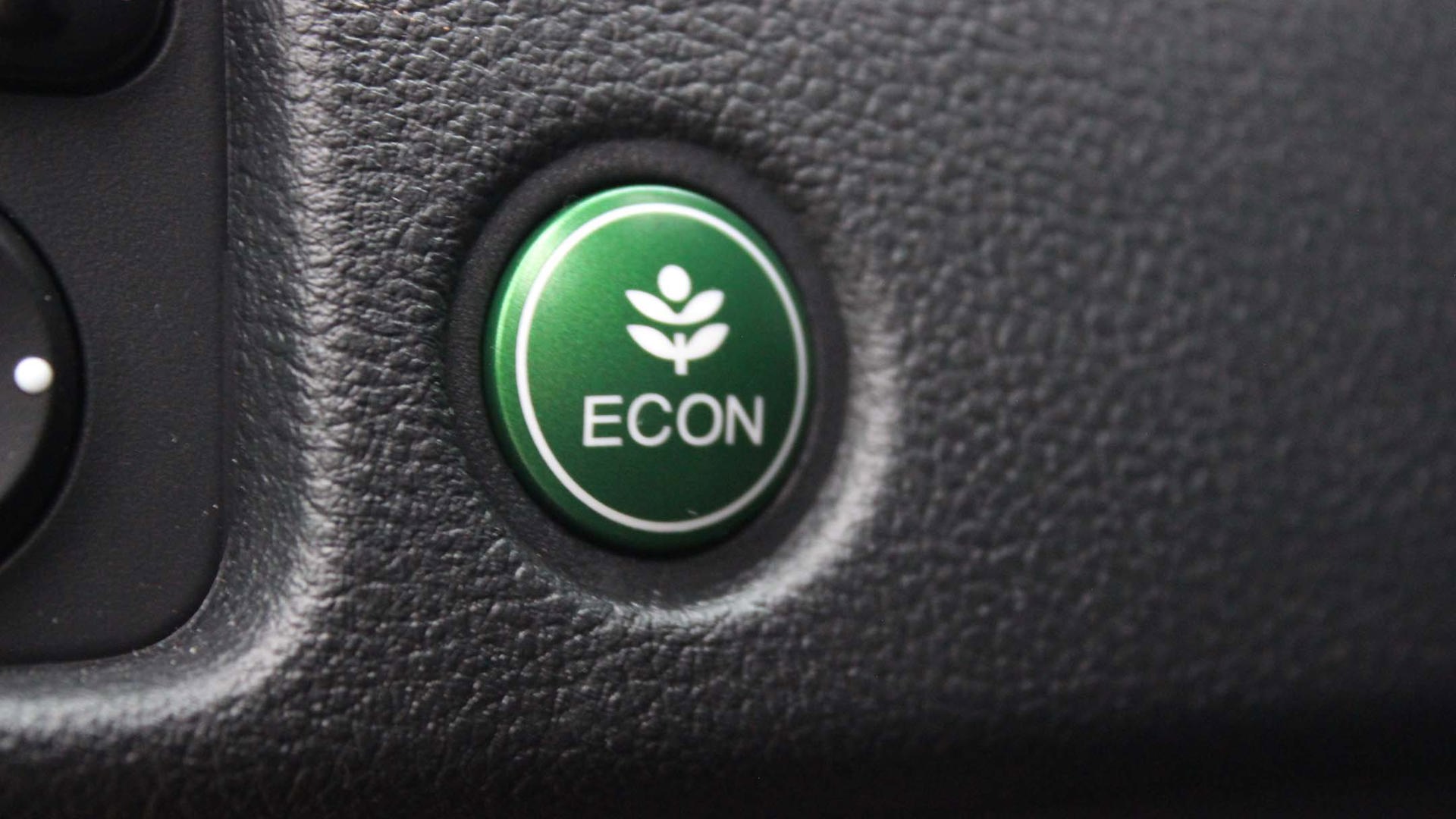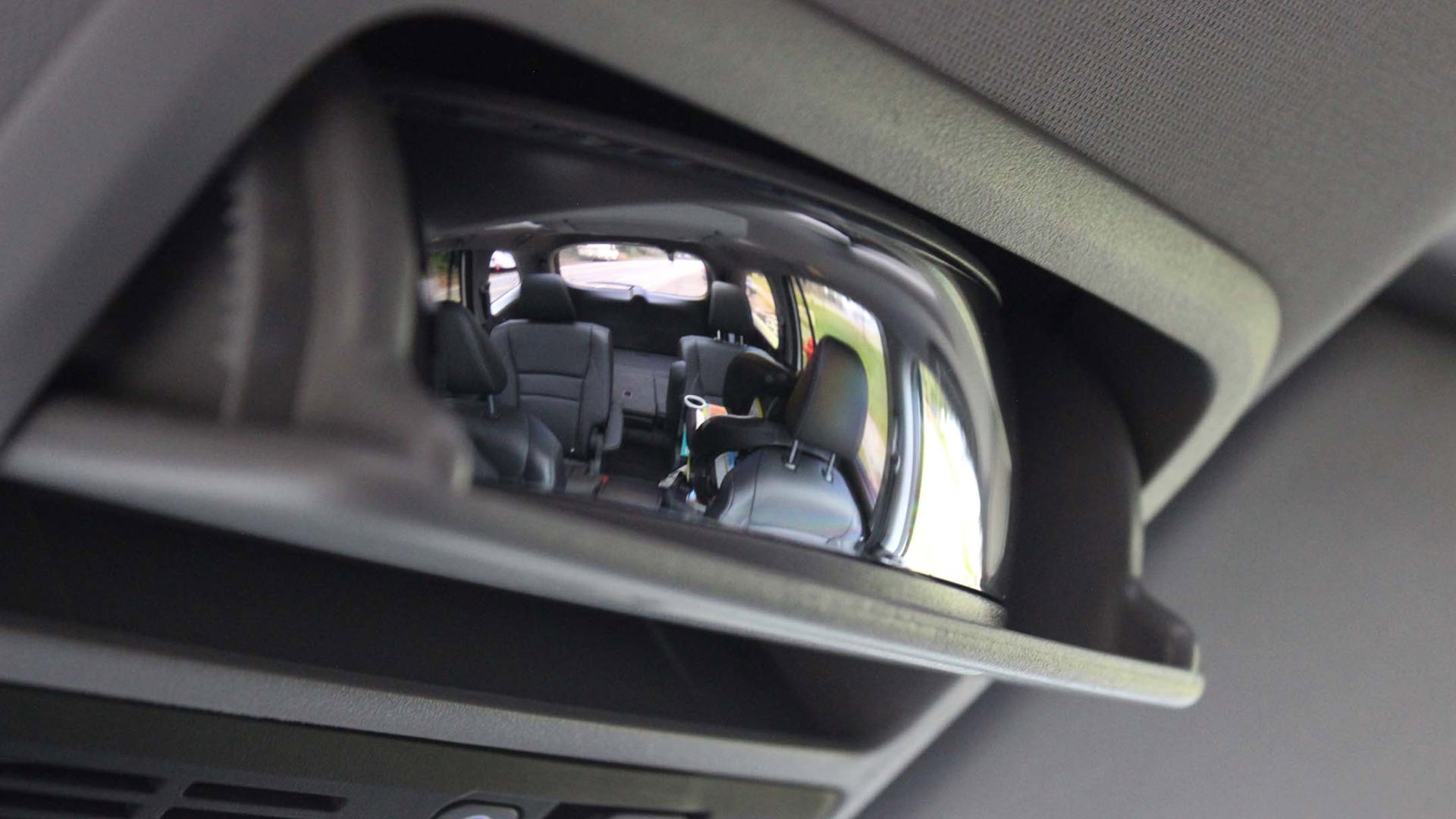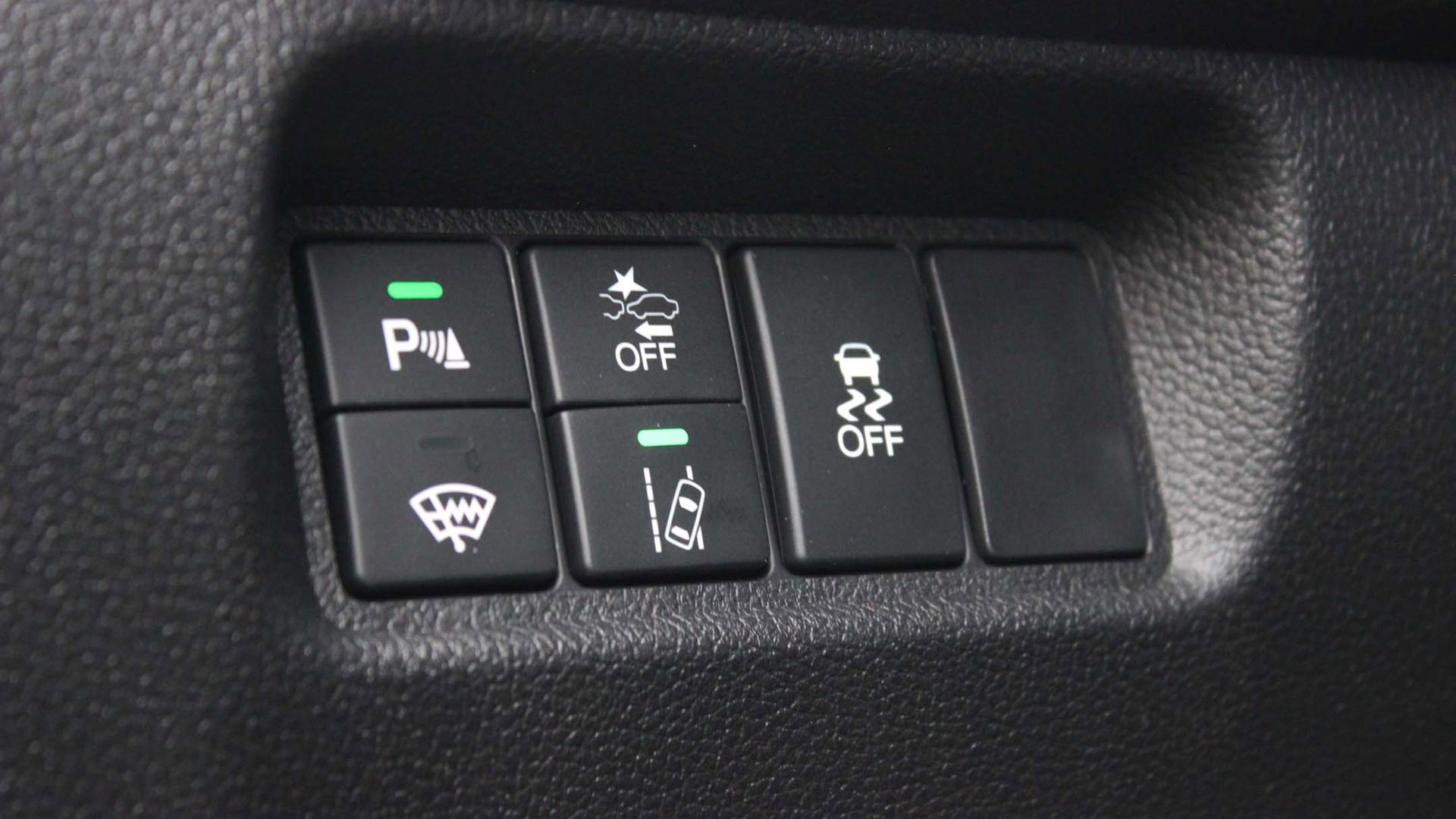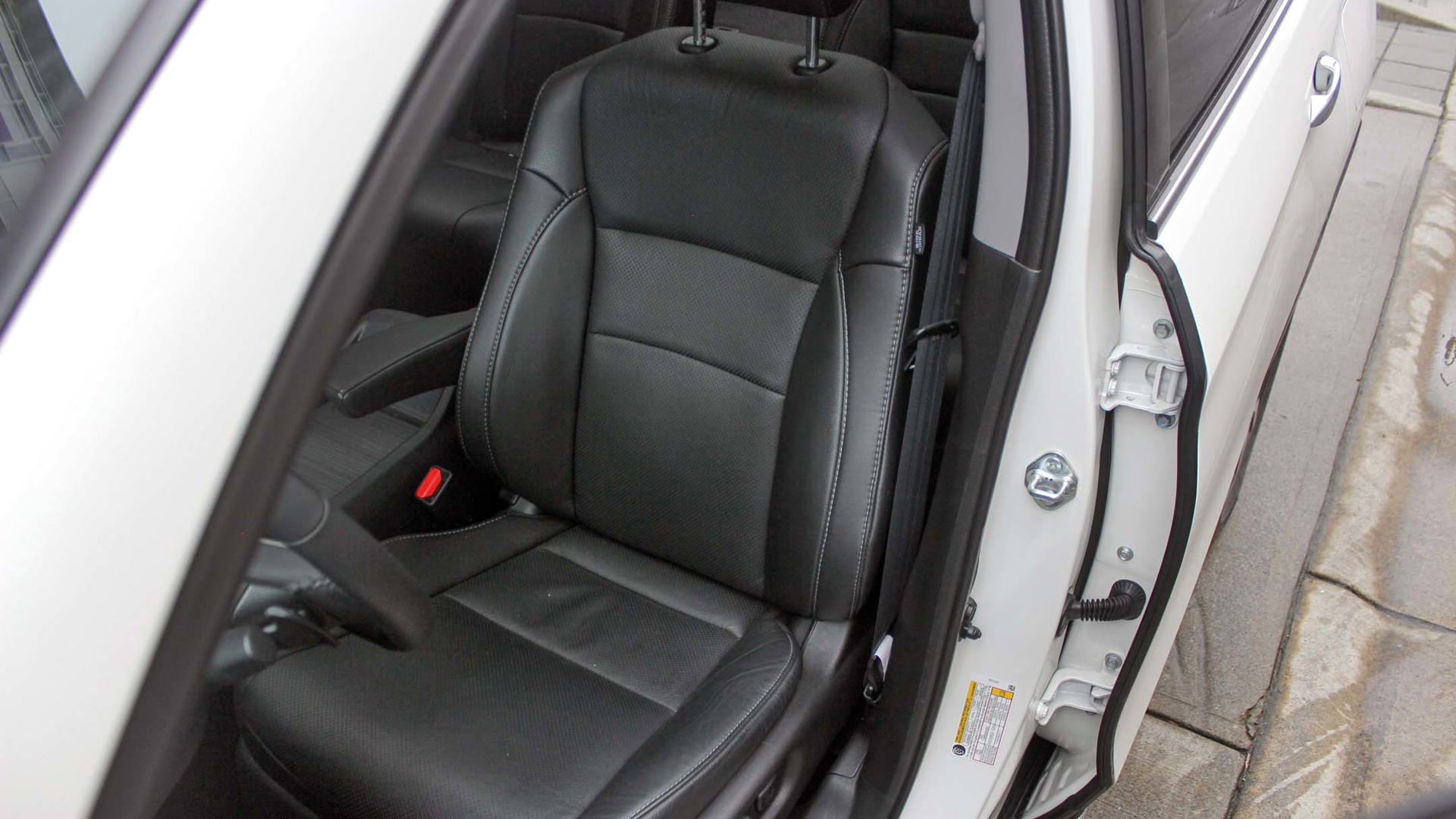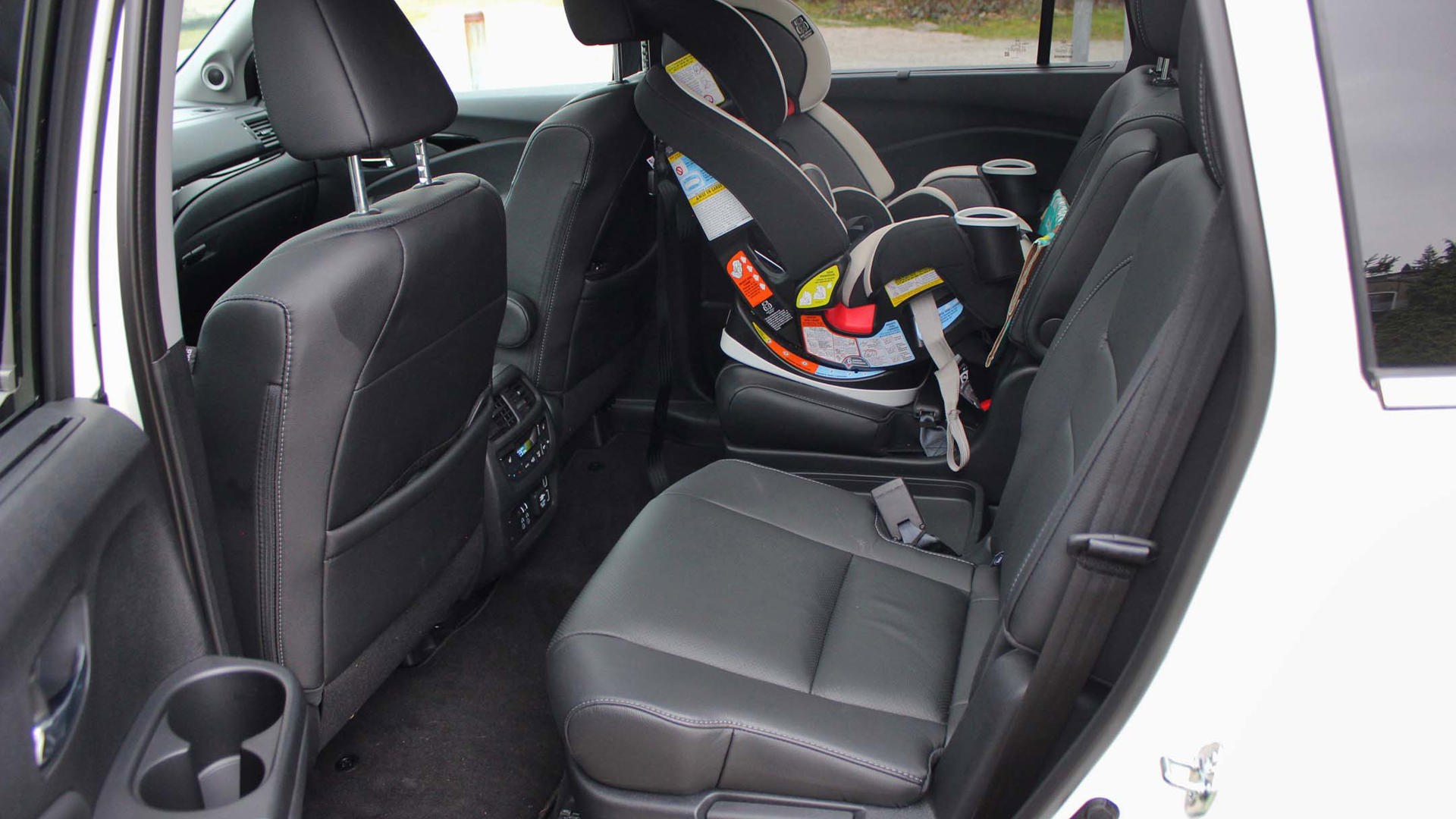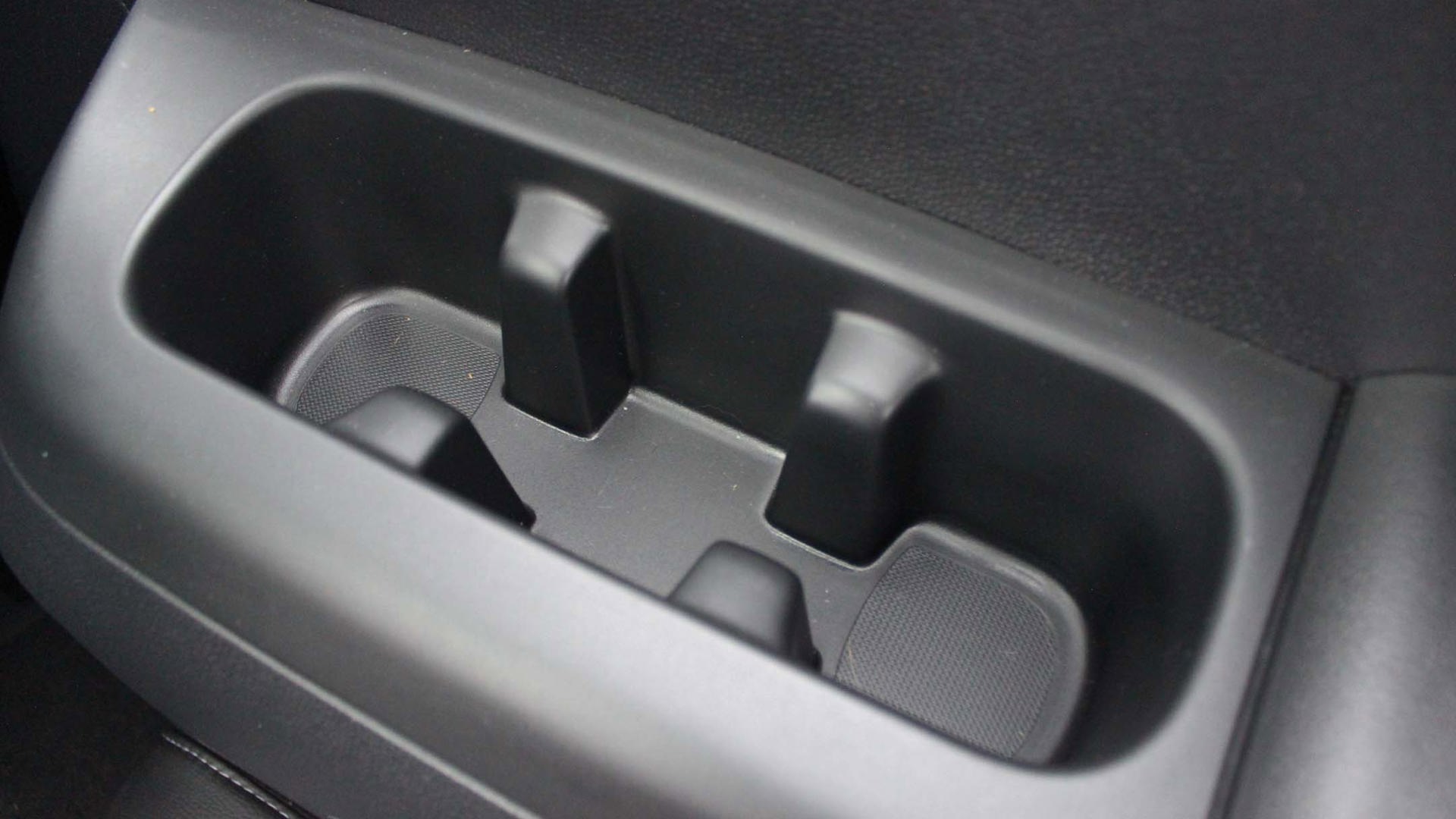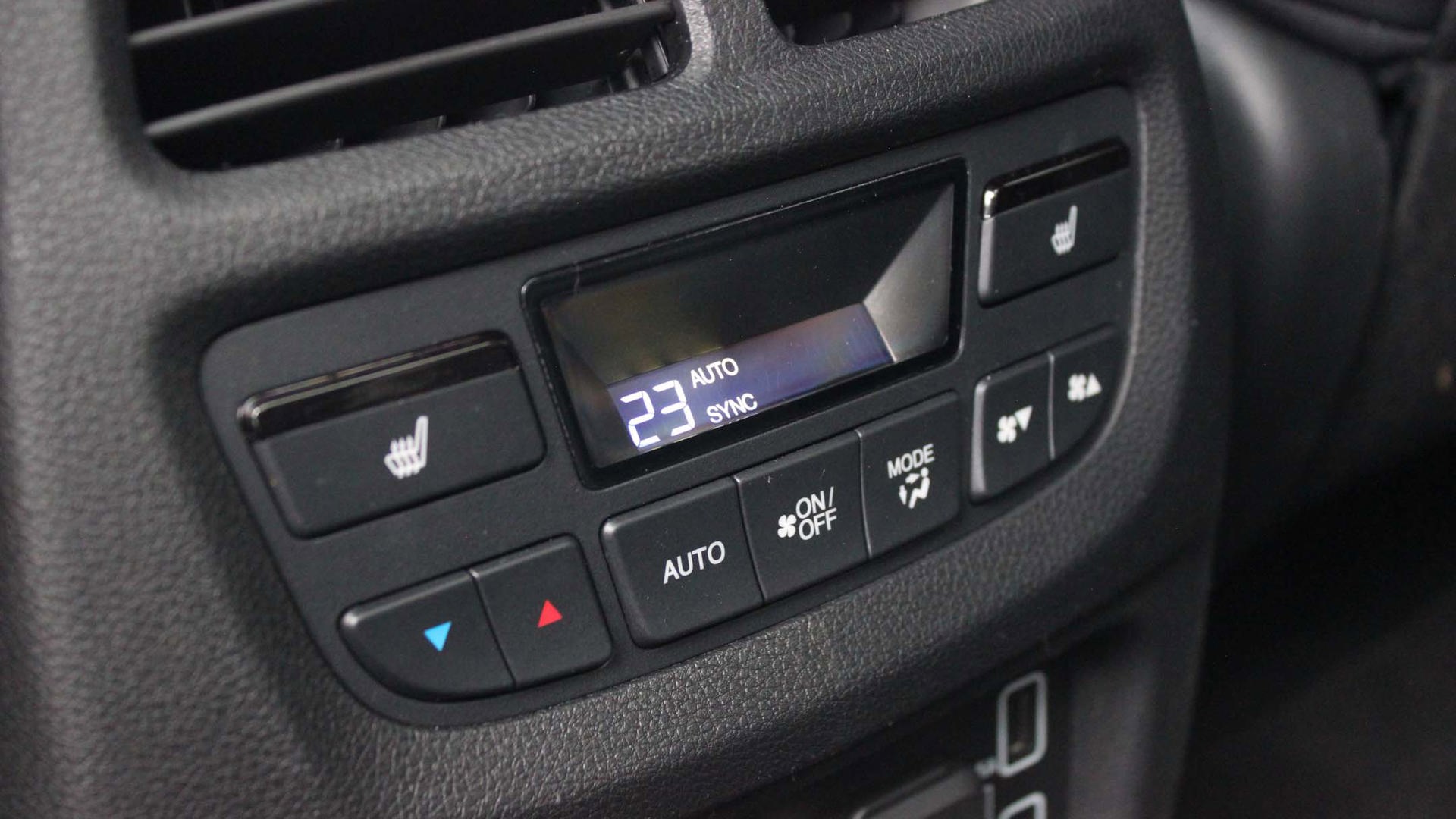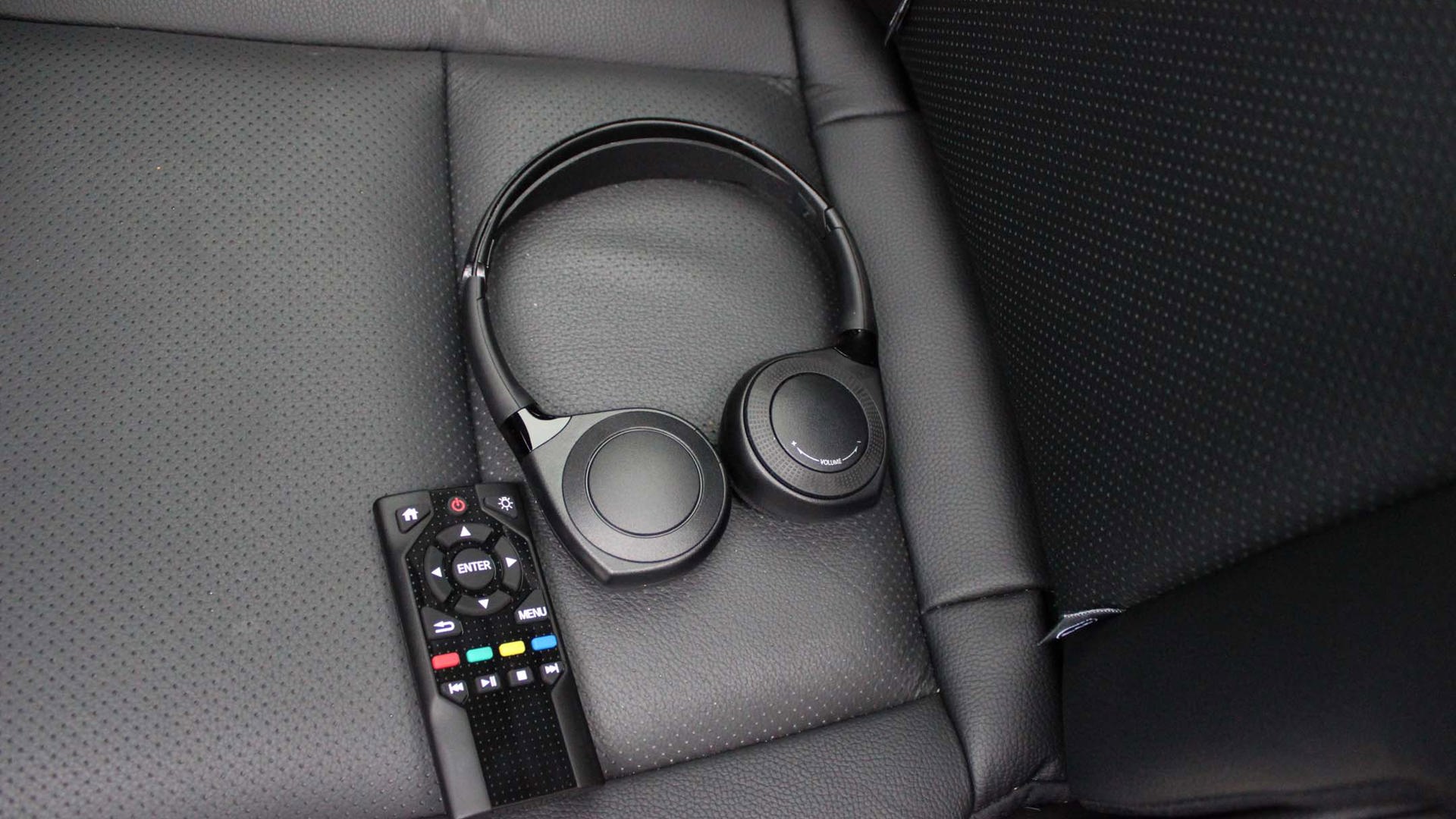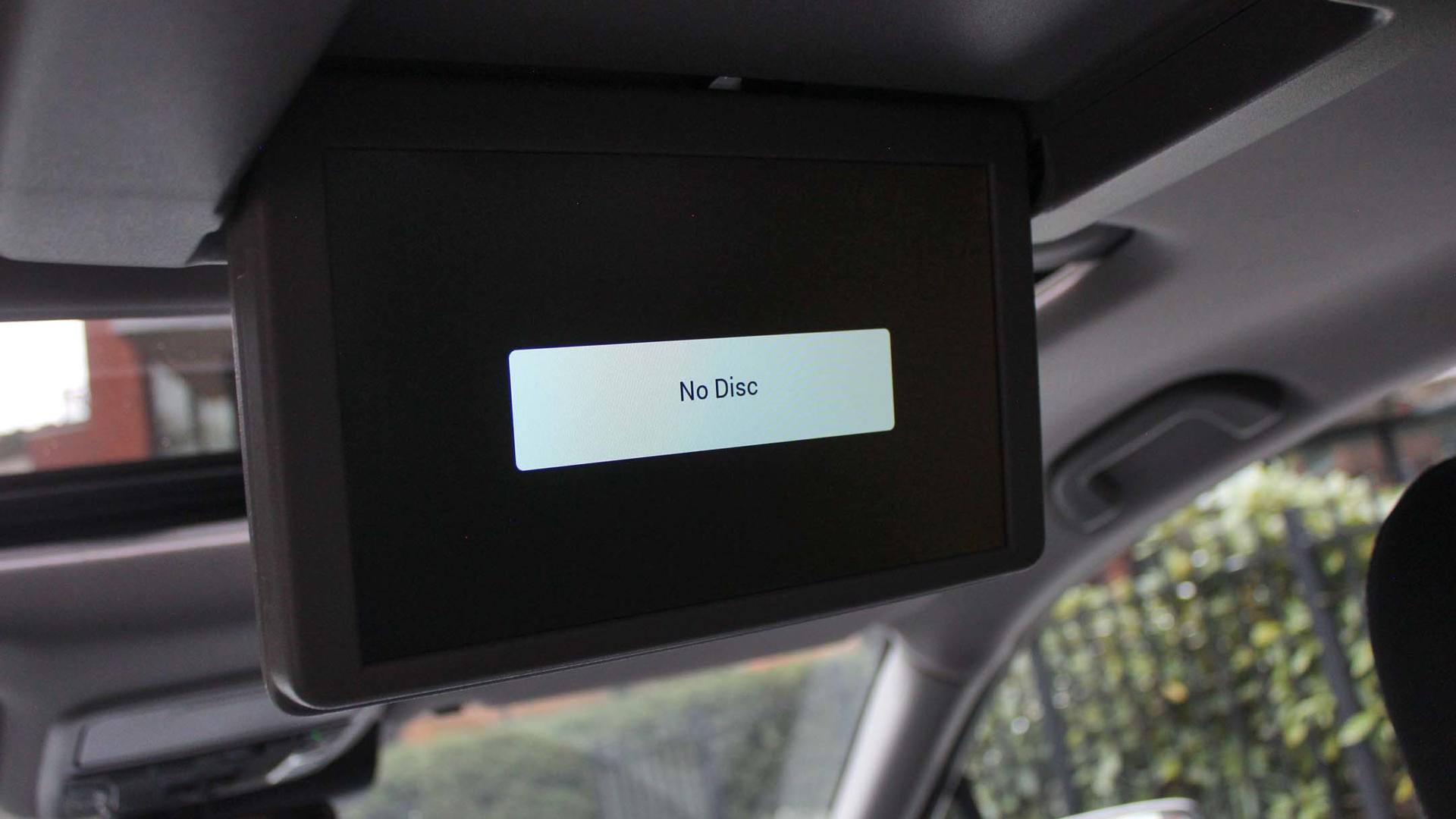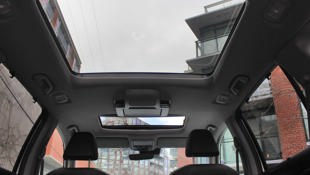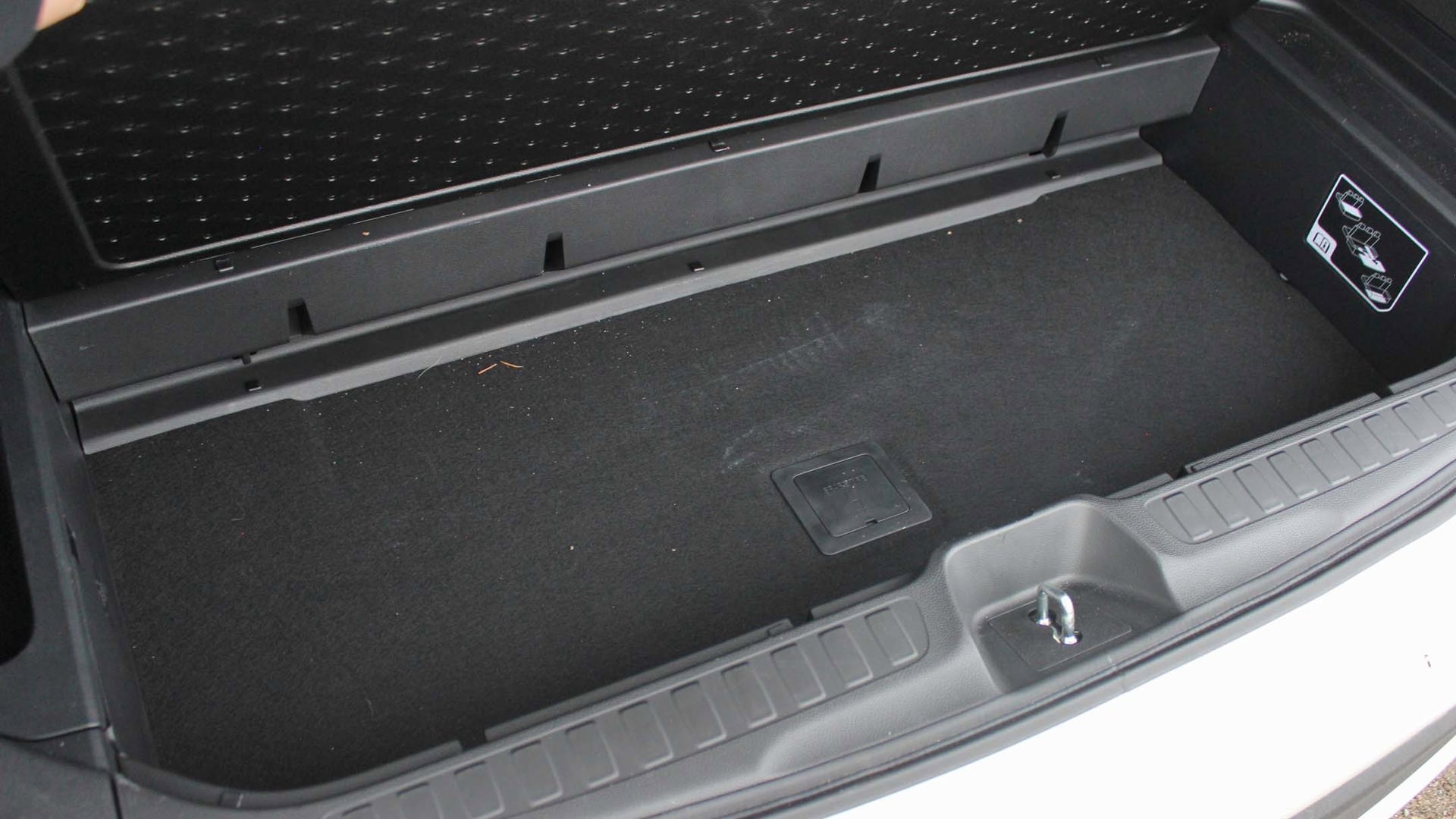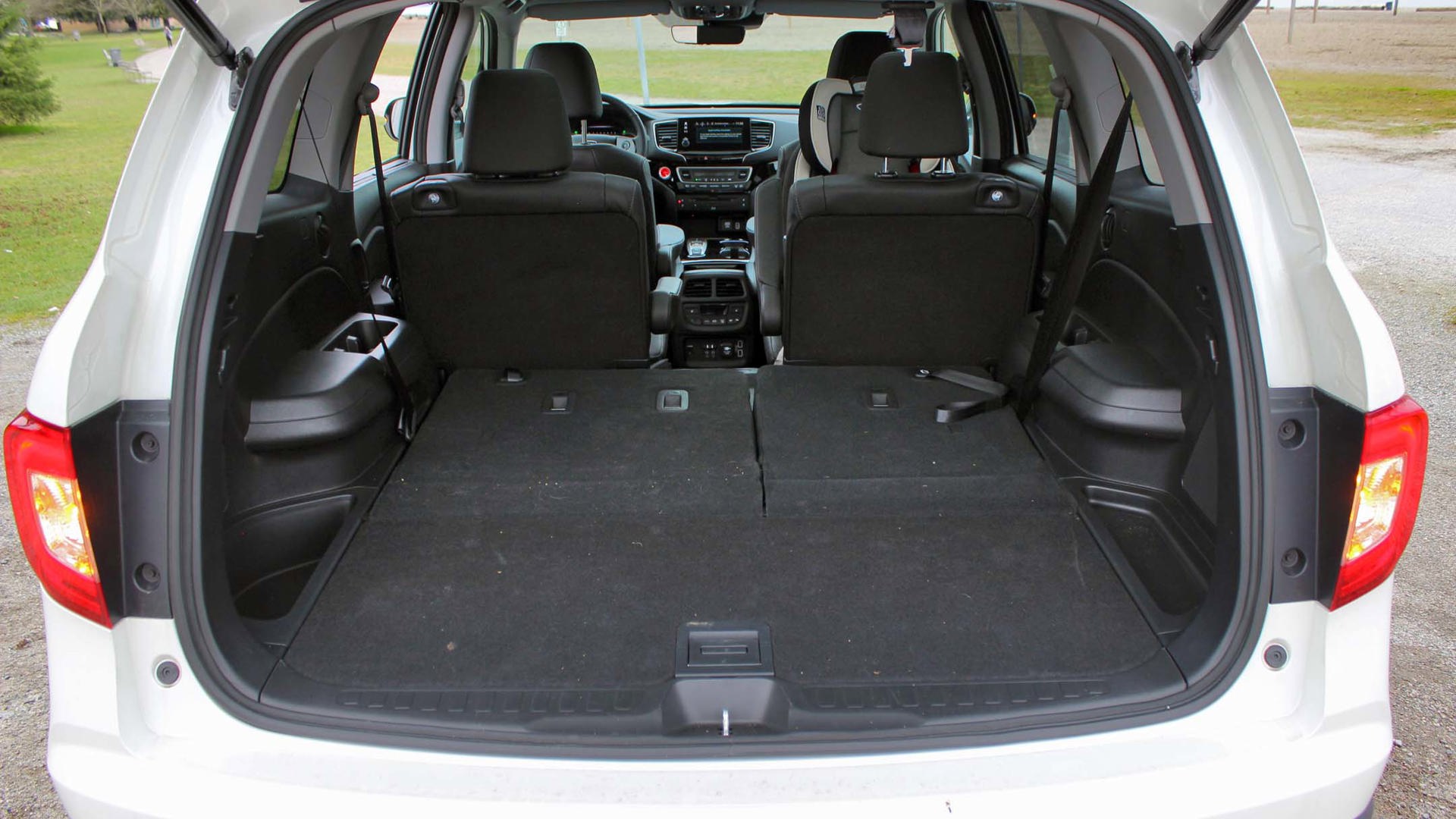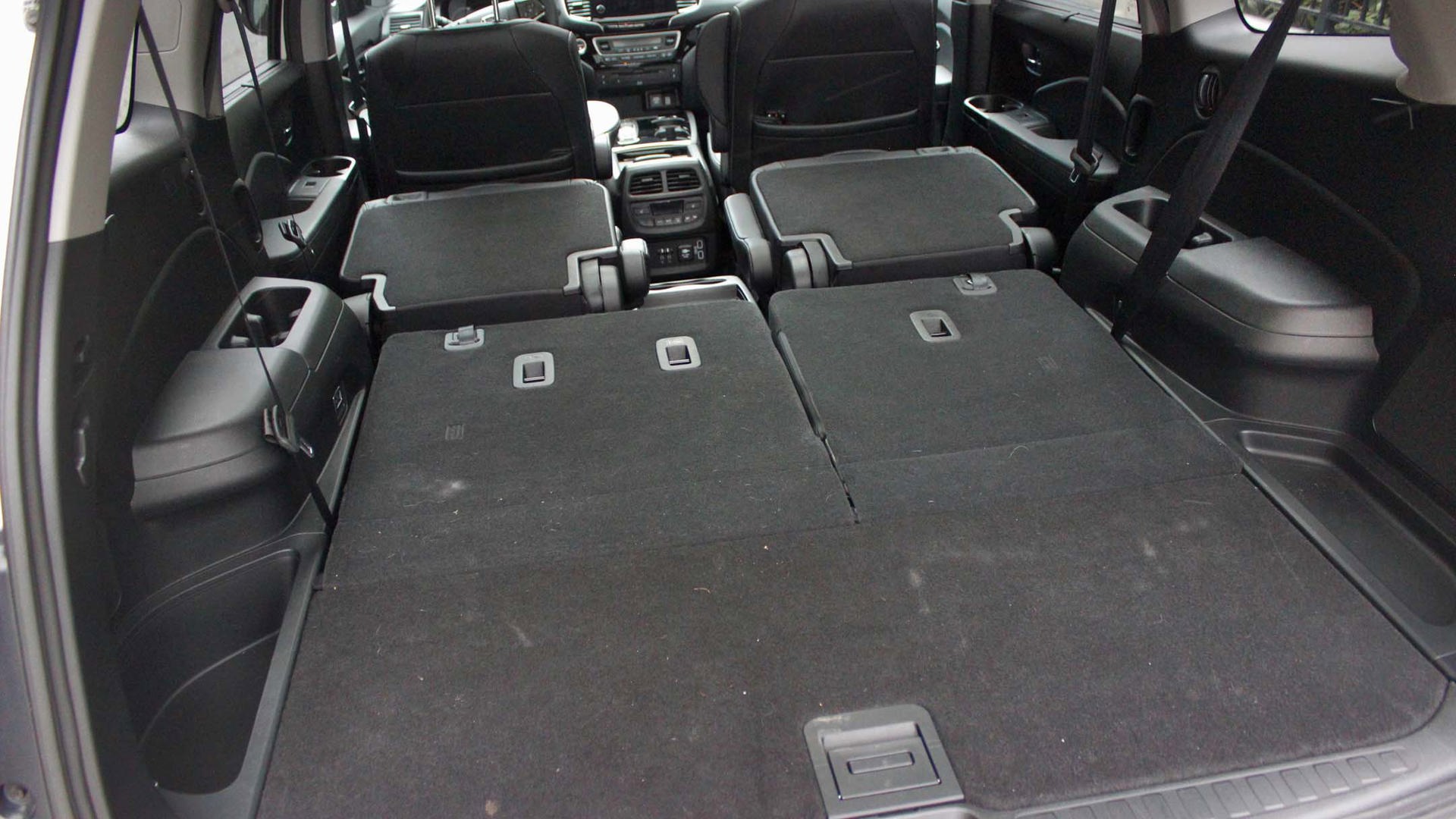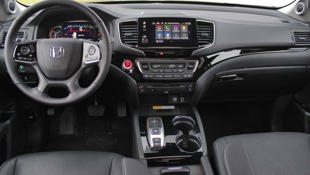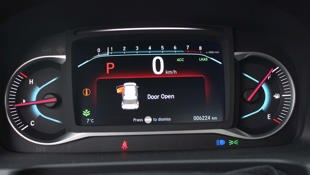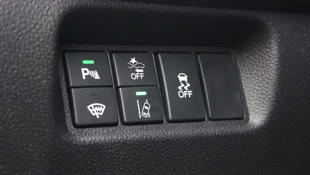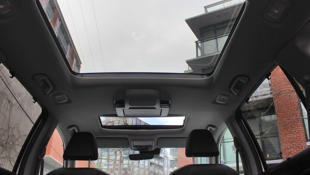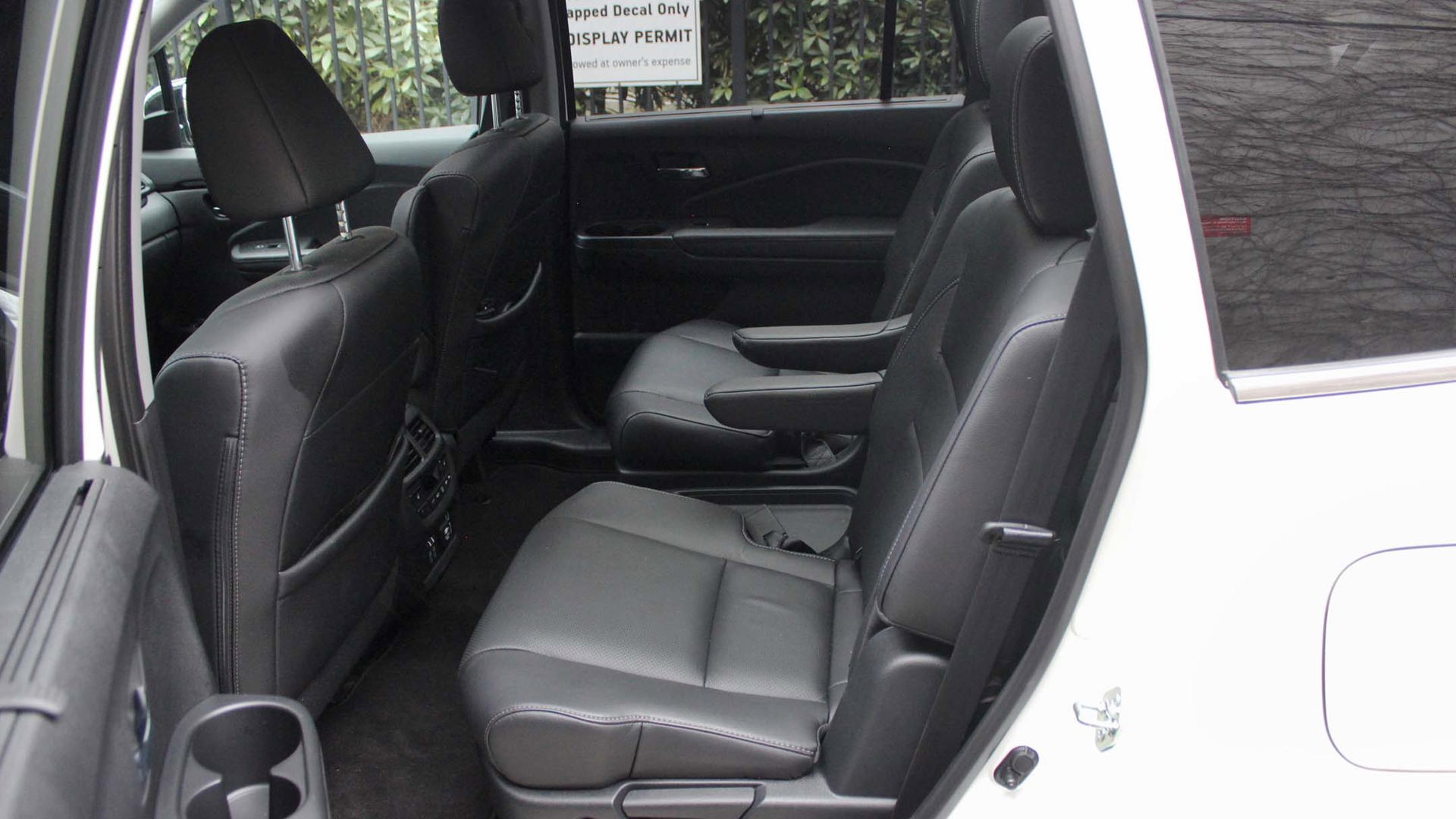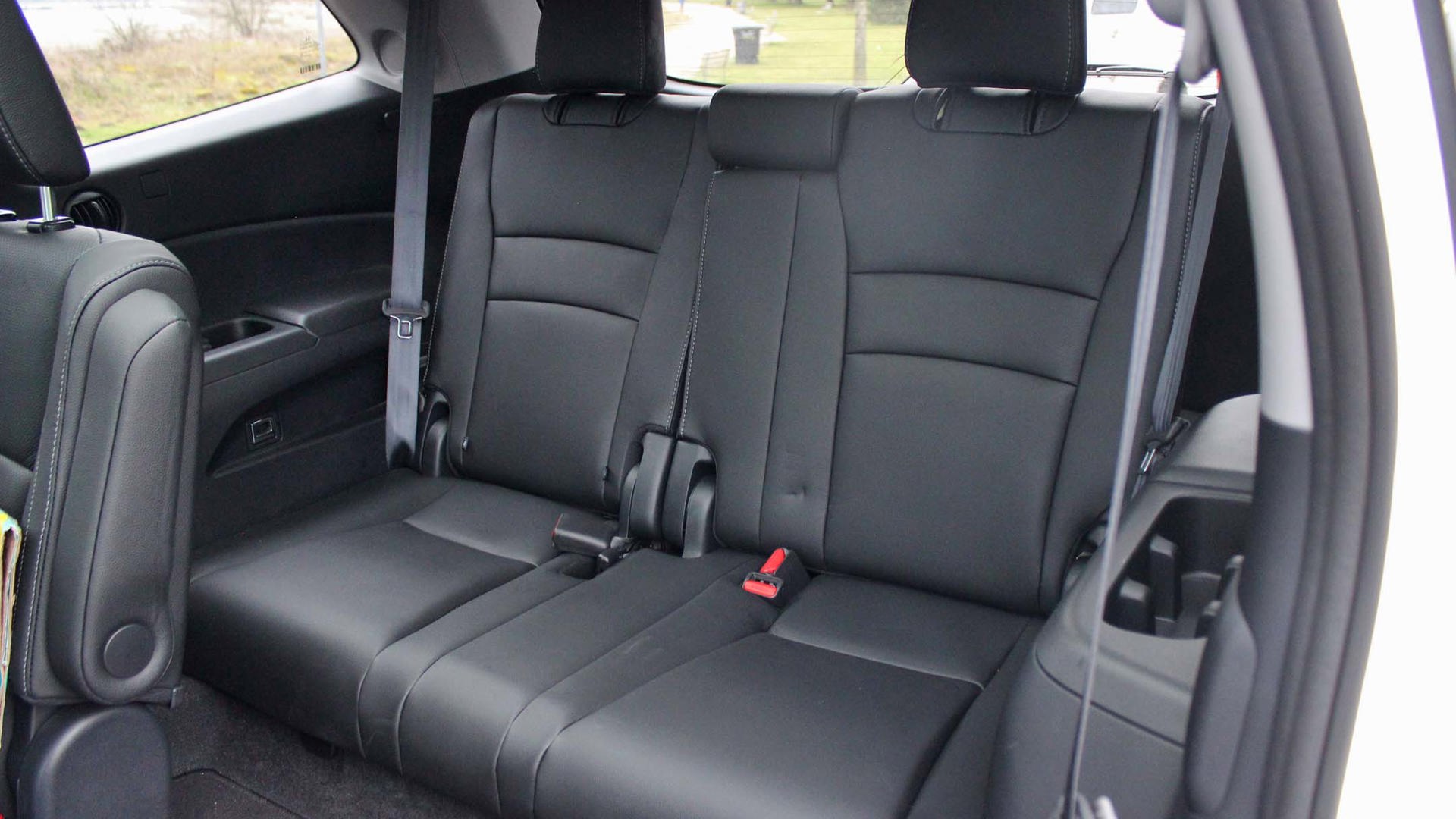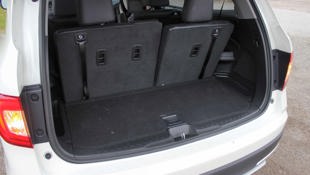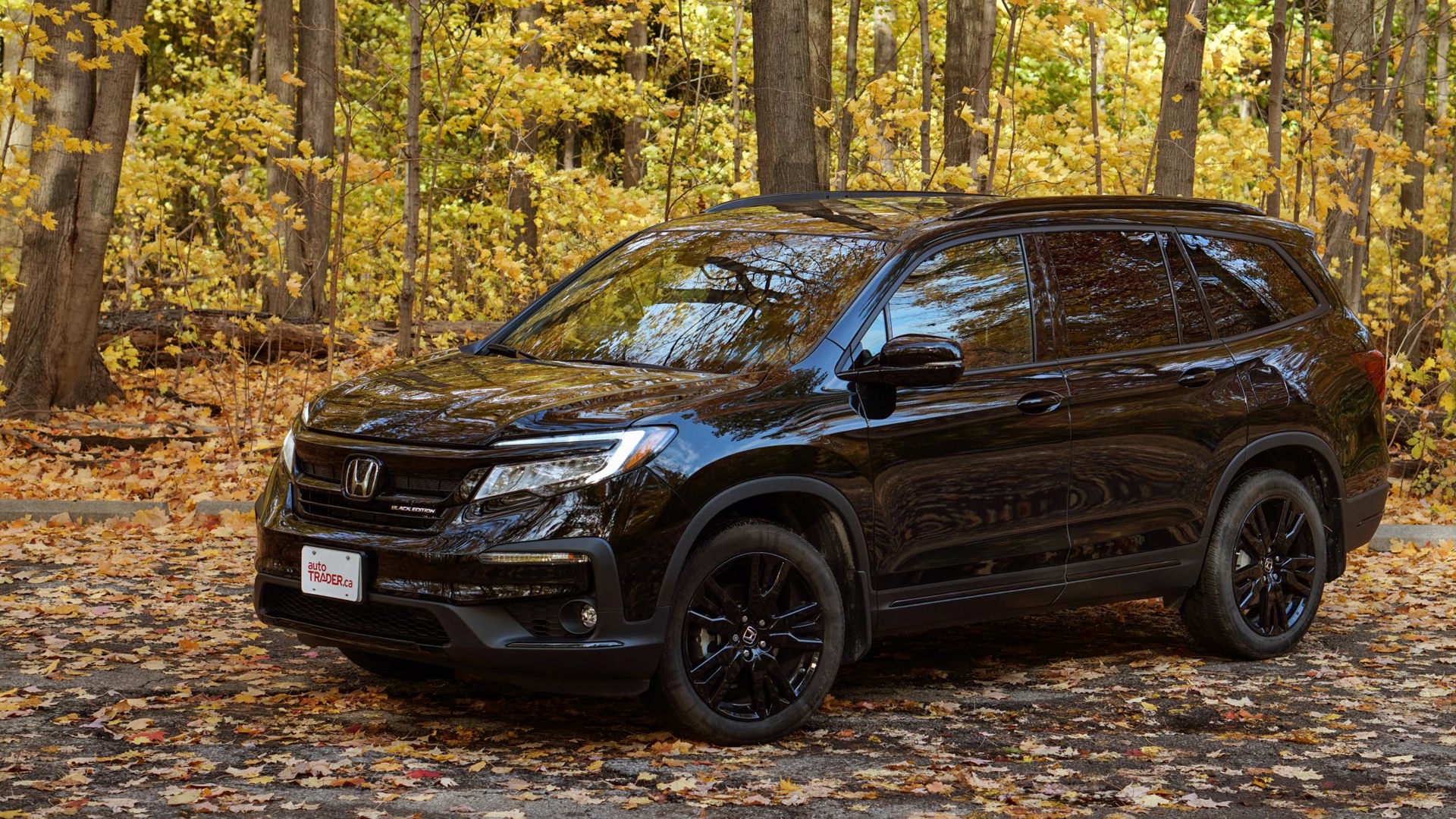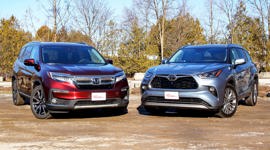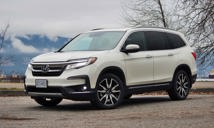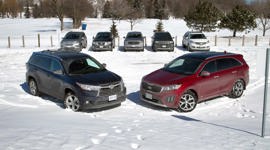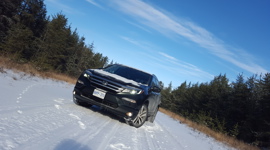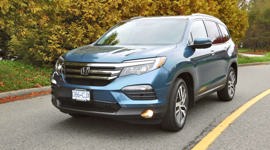Vehicle Type
Crossover SUV
History/Description
The latest-generation Honda Pilot hit the road in 2015, with a lower ride height and improved driving dynamics, safety, and refinement. Focused on delivering key attributes of importance to Canadian families, this three-row crossover found a home in many driveways.
Compared to its predecessor, the latest Pilot has an extended wheelbase that facilitates improved cargo capacity, easier entry and exit, and a more comfortable ride. A longer rear overhang further increases storage capacity, too.
Key competitors include the Ford Explorer, Nissan Pathfinder, Mazda CX-9, Chevrolet Traverse, and Hyundai Santa Fe XL, among others.
Expect space and flexibility to spare via an accommodating cabin with highly versatile seating options and an abundance of at-hand storage and handy cubbies and compartments to help keep occupants organized on the move.
This generation of Honda Pilot also featured the automaker’s latest in advanced safety tech, plenty of high-output USB fast-charge ports, and the latest in Honda all-wheel drive technology, including a terrain-mode selector.
Feature content includes a sunroof, push-button start, climate-controlled leather seating, premium audio systems, automatic lights, automatic climate control, a power tailgate, remote start, navigation, and more. Android Auto and Apple CarPlay are along for the ride as well.
Some models include a rear-seat entertainment system with HDMI inputs, a household power outlet, and the HondaLink advanced connectivity system.
Engines
This generation of Pilot came with a new 3.5L i-VTEC V6, good for 280 hp. By many accounts, this engine provides a pleasing combination of decent fuel economy, smooth and quiet operation, and adequate high-rpm power output for merging and passing. A driver-selectable Econ mode can be activated to help achieve optimum fuel mileage. Look for an automatic transmission on all models, and note that, while most used Pilots will have all-wheel drive, front-wheel drive models were also available.
What Owners Like
Many owners say the Pilot drives like it looks – big, comfortable, and stable. Ease of entry and exit, even for larger or mobility-challenged passengers, is well rated; and rear-seats are said to be usable by adults on longer trips. In all aspects of interior space and storage, the Pilot seems to have hit the mark. Other owner-stated plusses include confident traction from the fully automatic – though part-time – all-wheel drive system, and an excellent driving position, backed by above-average outward visibility.
What Owners Dislike
Common complaints include dull interior styling, lazy throttle response, and ride quality that can degrade rapidly on rougher roads or off-road surfaces, especially on models with larger wheels (and their thinner tire profiles).
Pro Tip: Tires Are Consumable Too
If a Pilot of this generation will be your first venture into the crossover scene, be sure to understand a few cost-related factors before your purchase.
First, note the tire and wheel size of the unit you’re considering, and determine the cost of replacement tires. Note that models with larger wheels will often require a bigger hit to your bank account when new tires are needed.
Second, be sure to budget for winter tires, too. The Pilot is loaded with traction-enhancing systems to help you and yours get around safely in the snow, but these systems only work as well as the tires mounted to the vehicle. Winter tires are the only way to ensure maximum performance and grip in inclement weather.
The Test Drive
Central Command Screen Workout
Give the touchscreen a workout by spending a few minutes operating and manipulating all functions. Pair your phone, make a call, set a navigation destination, play some music from each available source, and explore the system fully. Beware signs of lagging, crashing, non-responsiveness, or poor performance. Problems like these may require a simple system reset, or a pricey hardware replacement. Have any issues assessed by a technician before you buy. Note that dealer-installed software updates may be available to quickly remedy problems like these as well.
Here’s some more reading on radio and head-unit problems.
On this topic, be sure to scrutinize the condition of the Pilot’s touchscreen surface, looking for signs of wear and scratches. Some owners have chosen to apply aftermarket screen protectors to fend off damage.
Confirm Accessory Functionality
Shoppers should plan to confirm proper functionality of all on-board features and accessories before they buy. Confirm that all seating functions (including motorized adjustments, memory function, and rear-seat fold and slide provisions) are in proper working order. Test the rear-seat climate control and entertainment system. Run the sunroof, all power windows and locks, all remote keyfobs, and (especially) the power tailgate through their paces, too.
If the power tailgate seems wonky, and especially if it reverses direction for no apparent reason or fails to close or open properly, have it inspected by a technician before you buy. Sometimes, power tailgate problems like this can be fixed with a simple computer reset, and other times, they require pricey hardware replacement.
Tailgate Rust Check
According to this discussion, some owners have reported excessive rust to areas of the Pilot’s tailgate, sometimes at just a few years old. The issue, according to the owner community, lies with a leak that allowed water into the tailgate on earlier models from this generation. Refer to the discussion and photos at the link for an idea of what, and where, to check for rust. Note that warranty coverage may be available to repair excessive rust that’s perforated the sheet-metal, if applicable.
Mandatory Inspection
Carefully inspect the Pilot you’re considering for signs of damage to the windshield and front bumper. Either may cause issues with Pilot’s advanced safety systems, which could be costly if repair and recalibration is required. Have the vehicle inspected professionally if you notice any warning or error messages related to the advanced safety systems.
Read This
Here’s a discussion where several current-generation Pilot owners discuss their ownership experience so far. Most have reported minor problems if any, and many cite proper and ongoing maintenance as key factors in satisfactory reliability.
Accordingly, obtain full service records for the unit you’re considering, confirming that no factory-specified maintenance has been stretched or skipped. Note that without proof of continual maintenance covering the entire life of the vehicle, any remaining warranty coverage may be compromised.
Don’t Buy a Used Pilot from This Person
Here’s a somewhat common discussion in which a Pilot owner asks the owner’s community whether it’s okay to stretch or skip a regular maintenance routine related to the all-wheel drive system.
Those who consider regular maintenance to be optional or unimportant can expect remaining warranty coverage on associated components to be voided, as well as reduced long-term durability and resale value.
Unless you like expensive surprises, do not buy a used Pilot from an owner who has considered regular maintenance to be optional or subject to interpretation.
Transmission Troubles
Some owners have reported problems with the transmissions in their Pilots. This is one of the most commonly reported issues across all newer second-hand vehicles.
On your test drive, pay extra-close attention to the operation of the transmission on the model you’re considering, and at any sign of hard shifting, clumsiness, difficulty engaging your selected gear, or other funny business.
Note that the Pilot was offered with either six- or nine-speed transmissions, the latter of which where most complaints lie, possibly due to a supplier fault. Here’s some more important reading. Note that this ZF-supplied gearbox is used in numerous applications across various automakers, so the issue is well documented.
Avoid a used Pilot with a nine-speed automatic that’s misbehaving until it’s been assessed by a professional. In many cases, the issues are remedied with updated software or wiring components.
Wonky Keyfob Control
Some owners have reported sporadic operation of door locks, as well as the remote-start system. Try both from each available keyfob, confirming proper operation. If you note any trouble, a software update (applied by a dealer technician) is likely to fix it.
The Verdict
Most of the Pilot’s commonly reported problems should prove easy to spot on a pre-purchase test drive. For best results, have the unit you’re set on inspected by a Honda technician before you buy, with an eye for confirming that all applicable software updates have been installed, and that all maintenance is up to date. Avoid a model with the nine-speed automatic for maximum peace of mind.
Here’s a list of recalls.
Safety Ratings
NHTSA: 5/5 Stars
IIHS: Top Safety Pick + (2016)
